Puffins, razorbills and murres (and more).
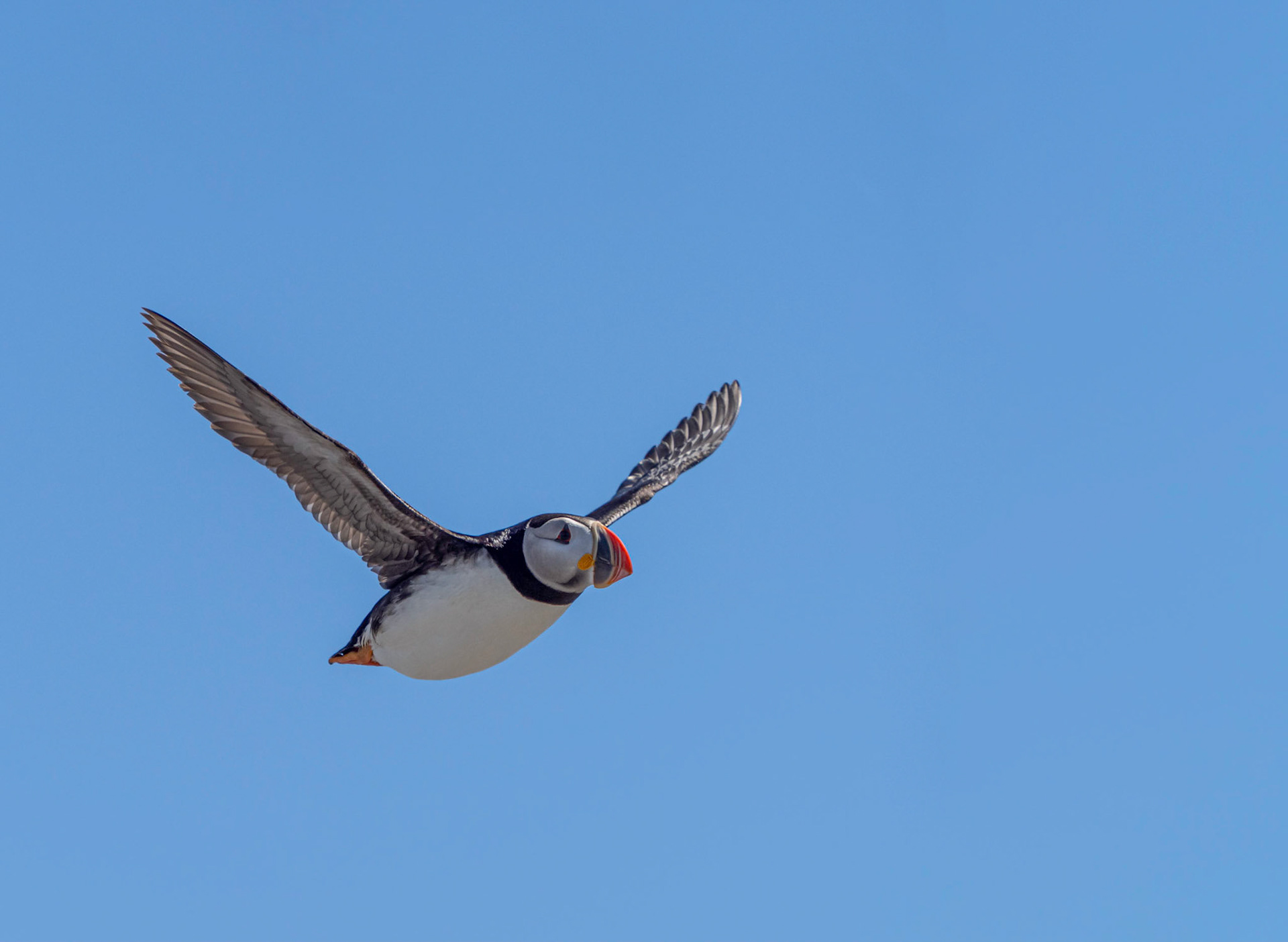


Ile aux Perroquets is a small (300 x 75 metre) island in the Mingan Archipelago National Park Reserve.
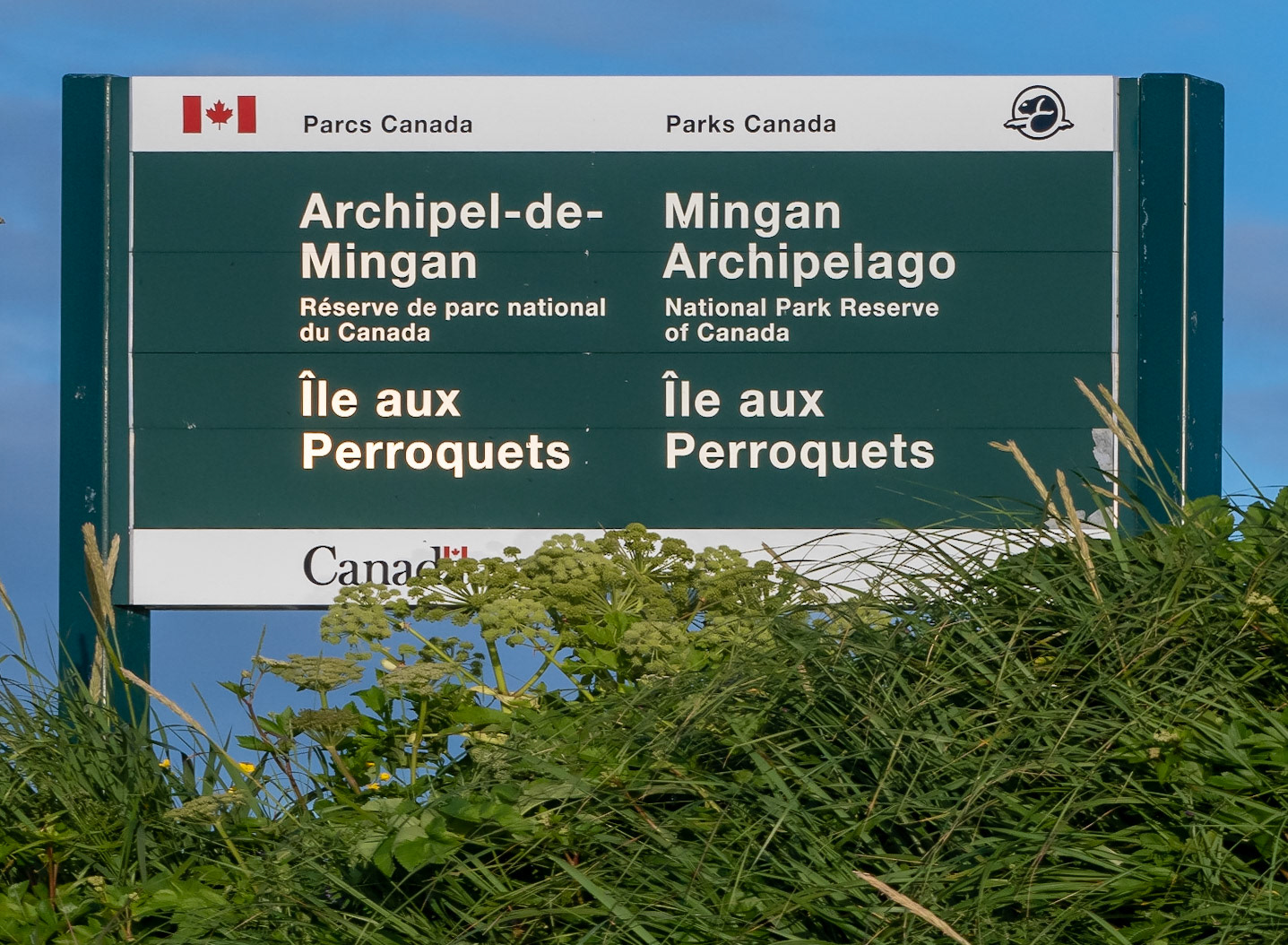

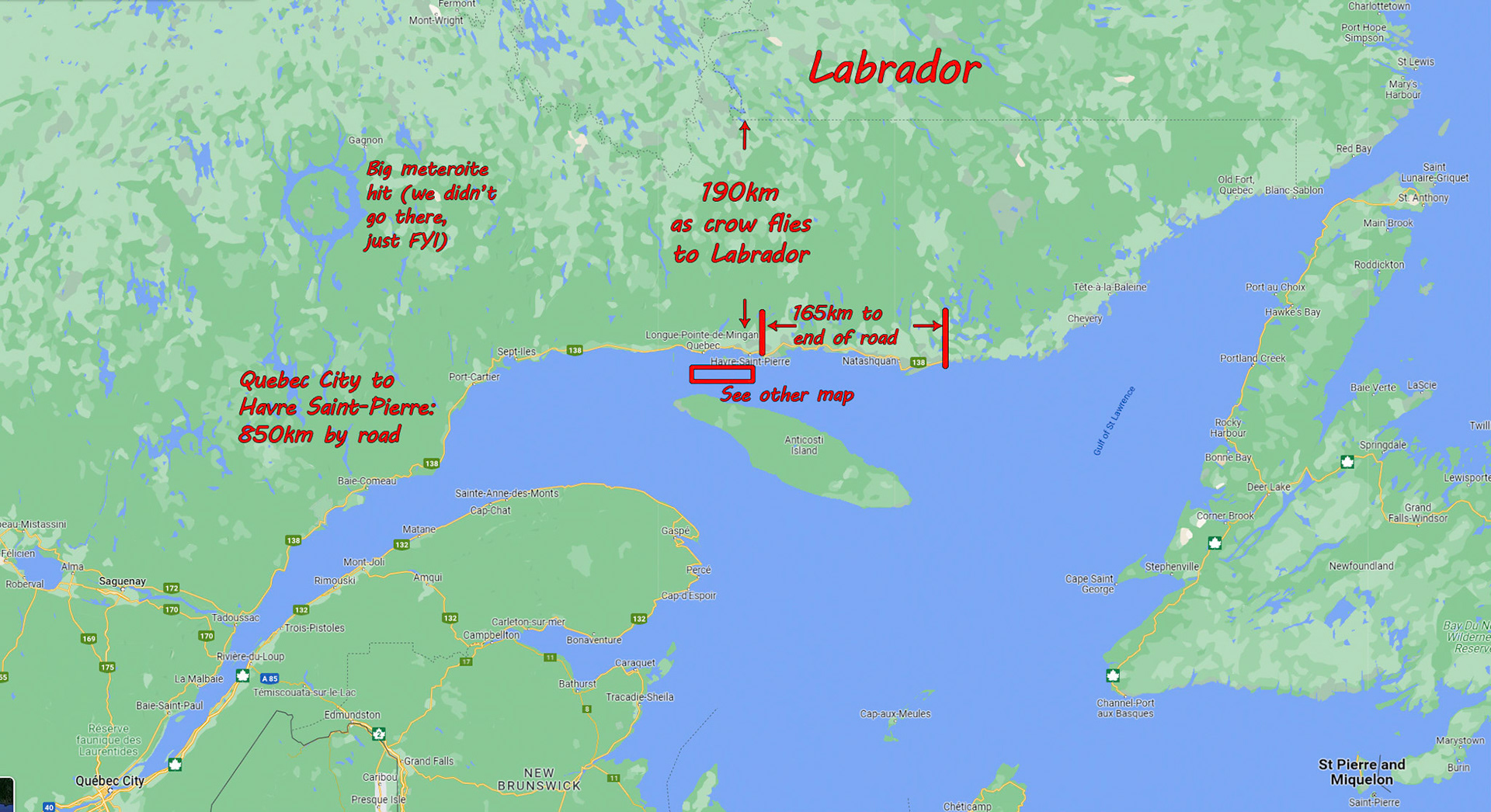


There is overnight accommodation for up to 10 visitors on the island, but the usual is 4-6 people; usually photographers, but also artists, and people just wanting to see the birds.
We booked for two nights in late July, but the small open boat that takes visitors to and from the island could not pick us up after our second night due to strong winds, so we stayed an extra day.
Late July, early August is peak activity time with the parents bringing mouthfuls of fish from the St Lawrence River into the burrows for their young.
Puffins are the most common birds on the island, followed closely by razorbills and some common murres. There also are some savannah sparrows, red-breasted nuthatches, herring and ring-billed gulls. In the water and on flat rocky tidal shoals around the island are female common eider ducks and their young.
The puffin and razorbill burrows can be at the top of the cliffs, or in the rocky/grass covered sides of the cliffs.


The murres, and many of the razorbills, seemed to have their hangouts further along the shoreline amongst less grassy areas.
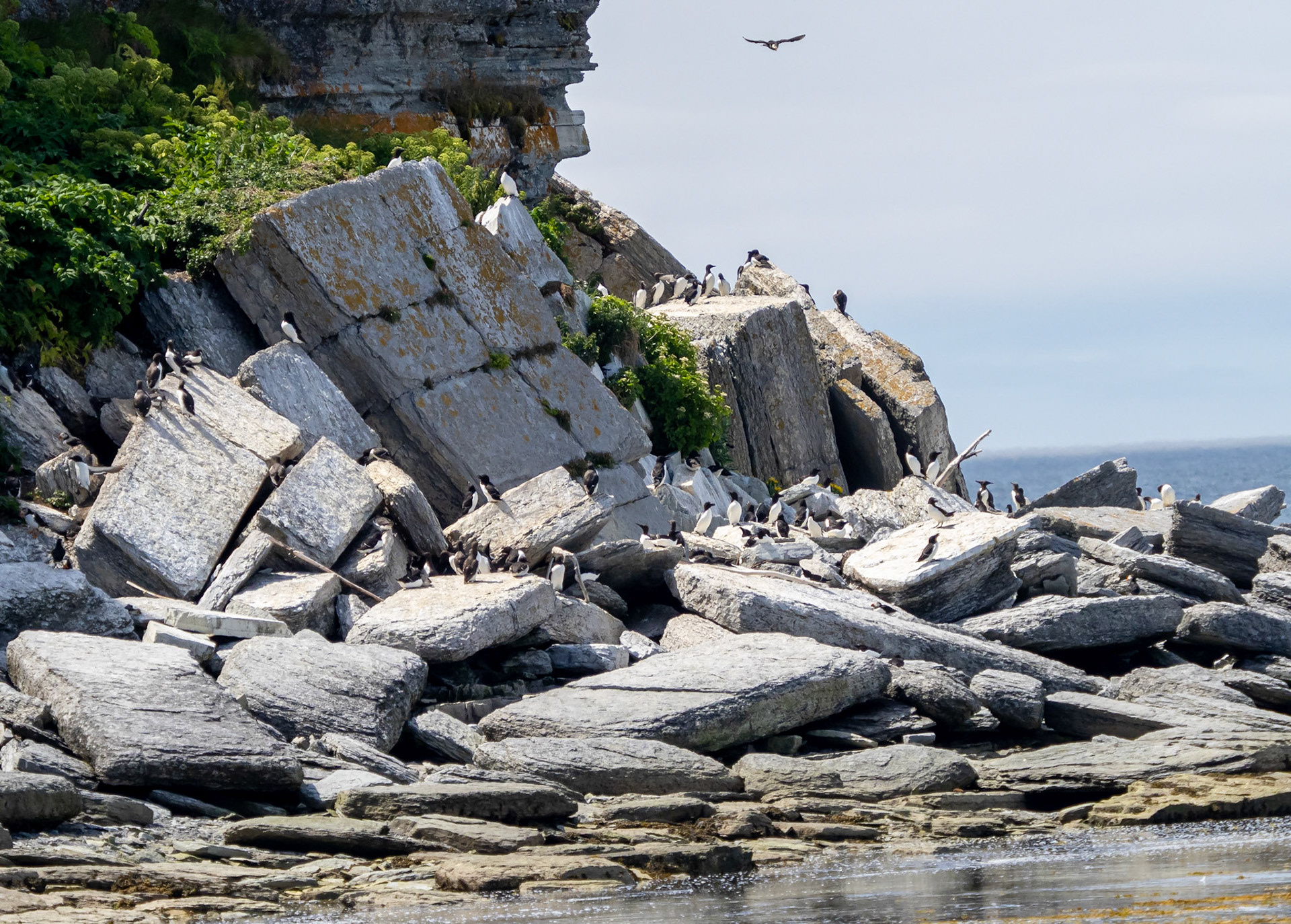
The razorbill and puffin burrows/nests are sometimes side by side.

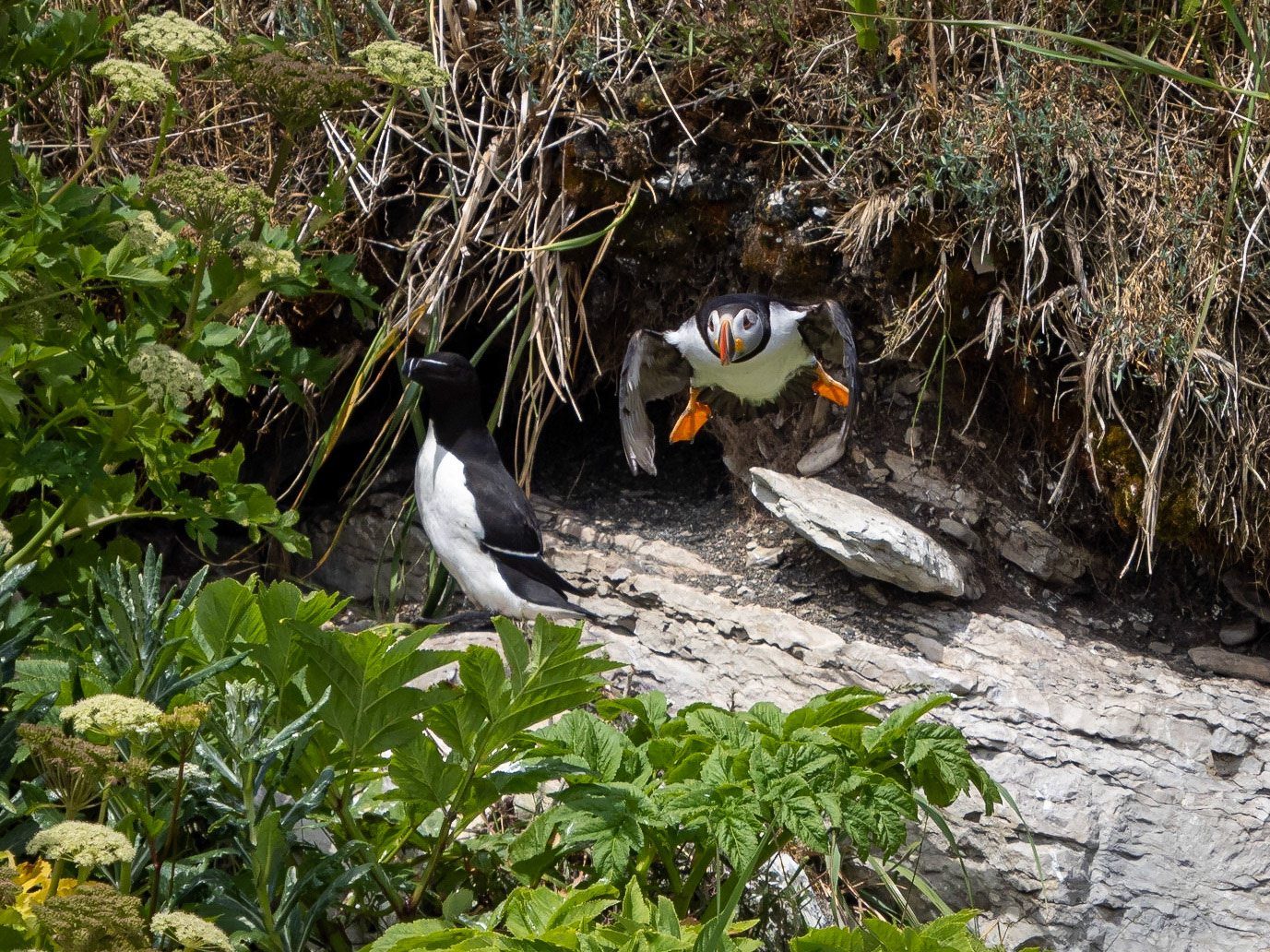
Affectionate interaction between the birds was not unusual.
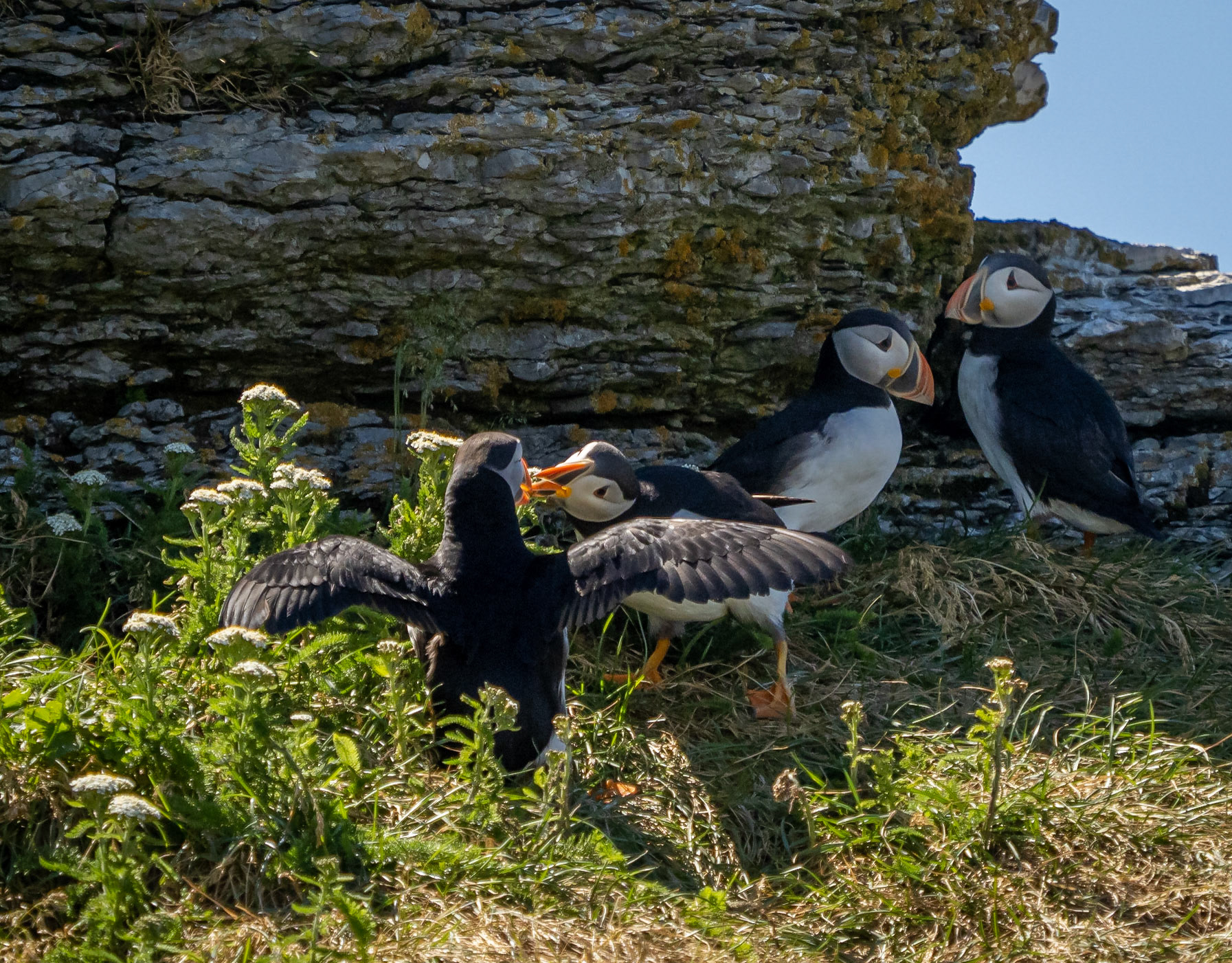
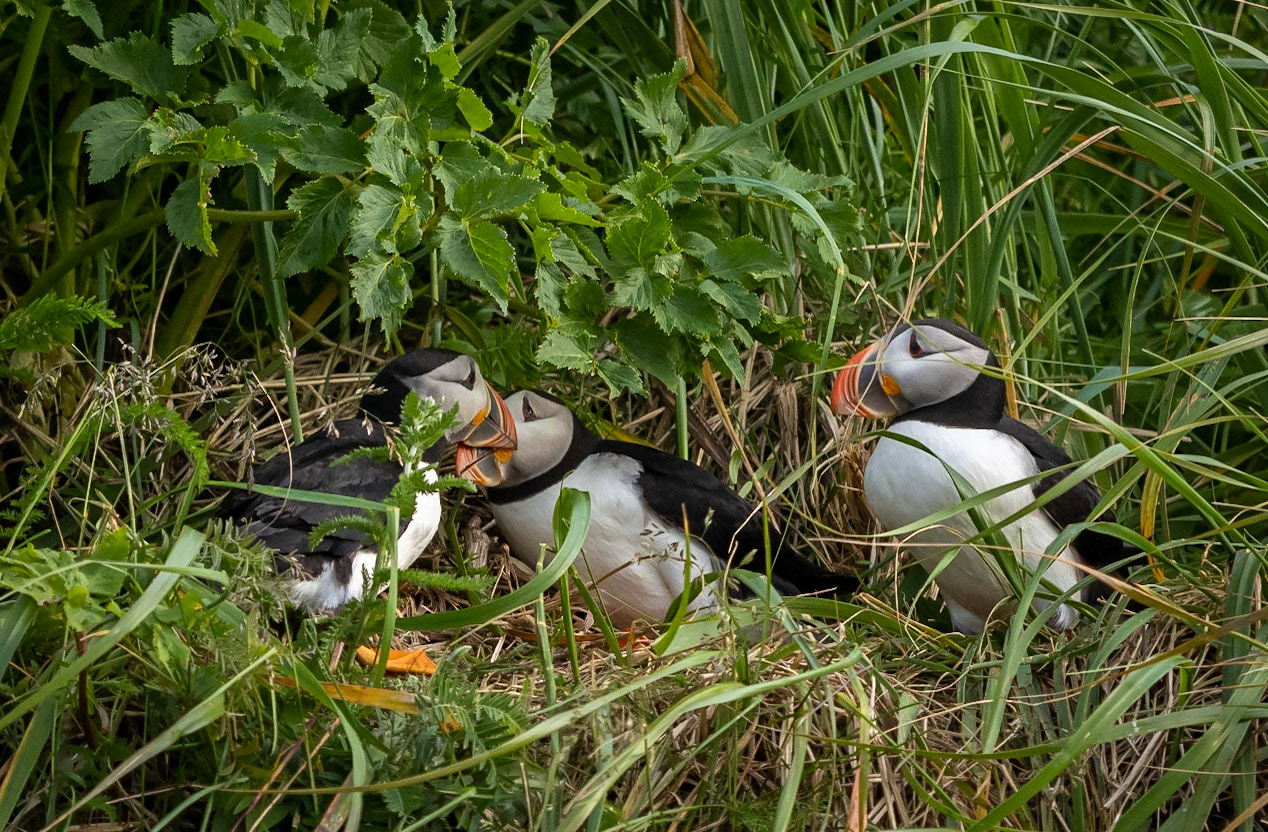
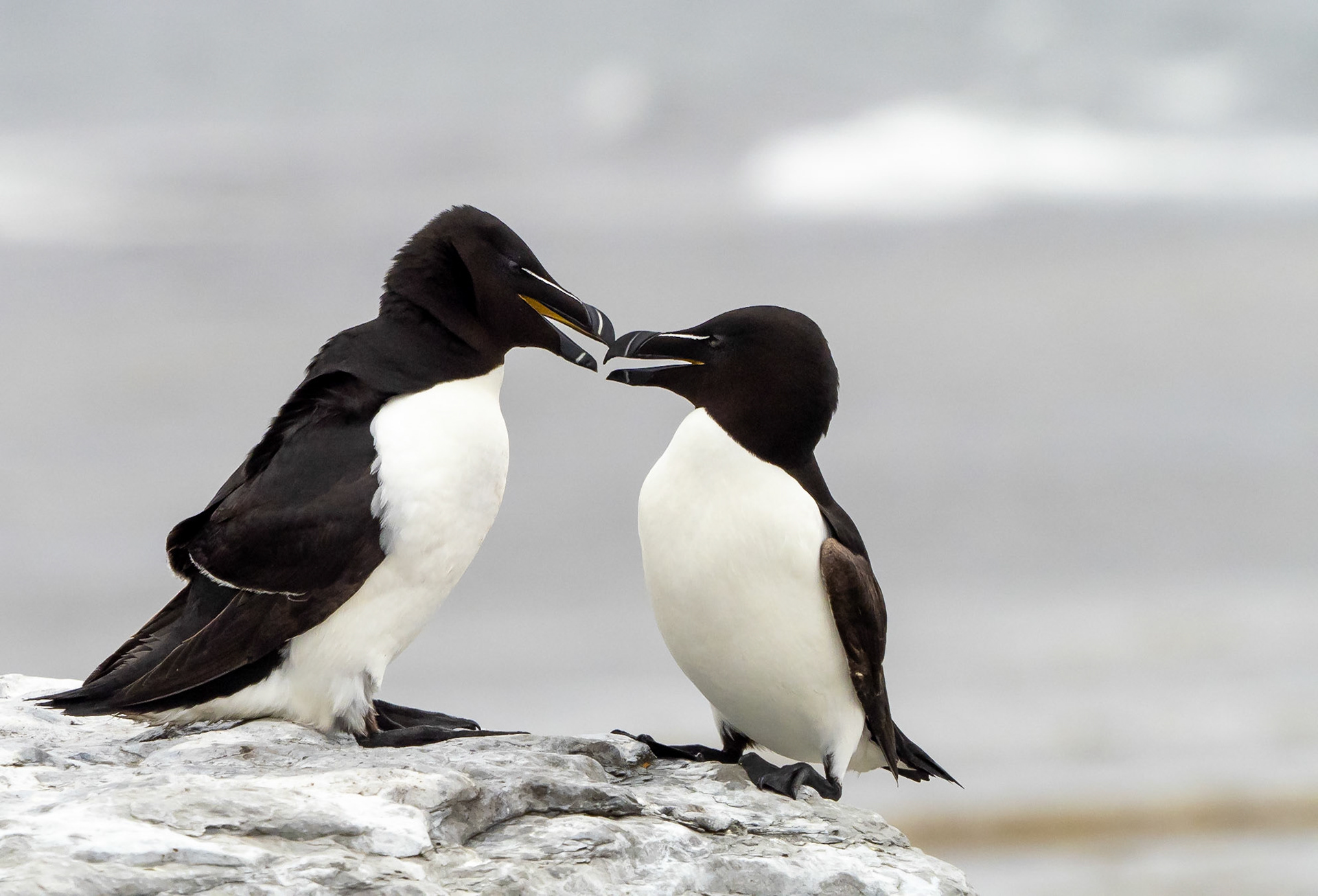
The puffins gathered in groups in various locations, often depending on the time of day.

Mid day at the top of the cliffs
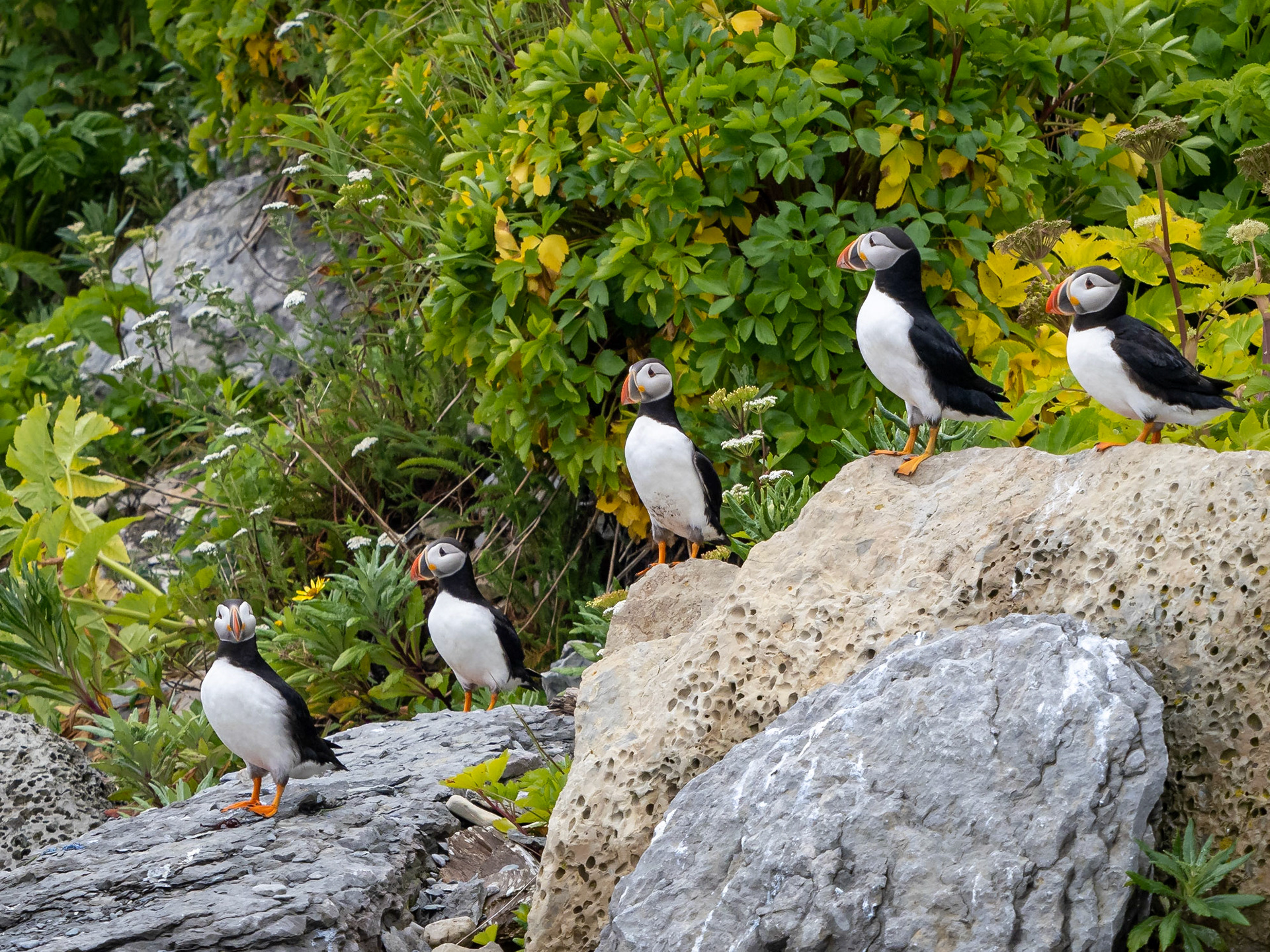
Early morning or late afternoon, long the rocks midway down the cliffs
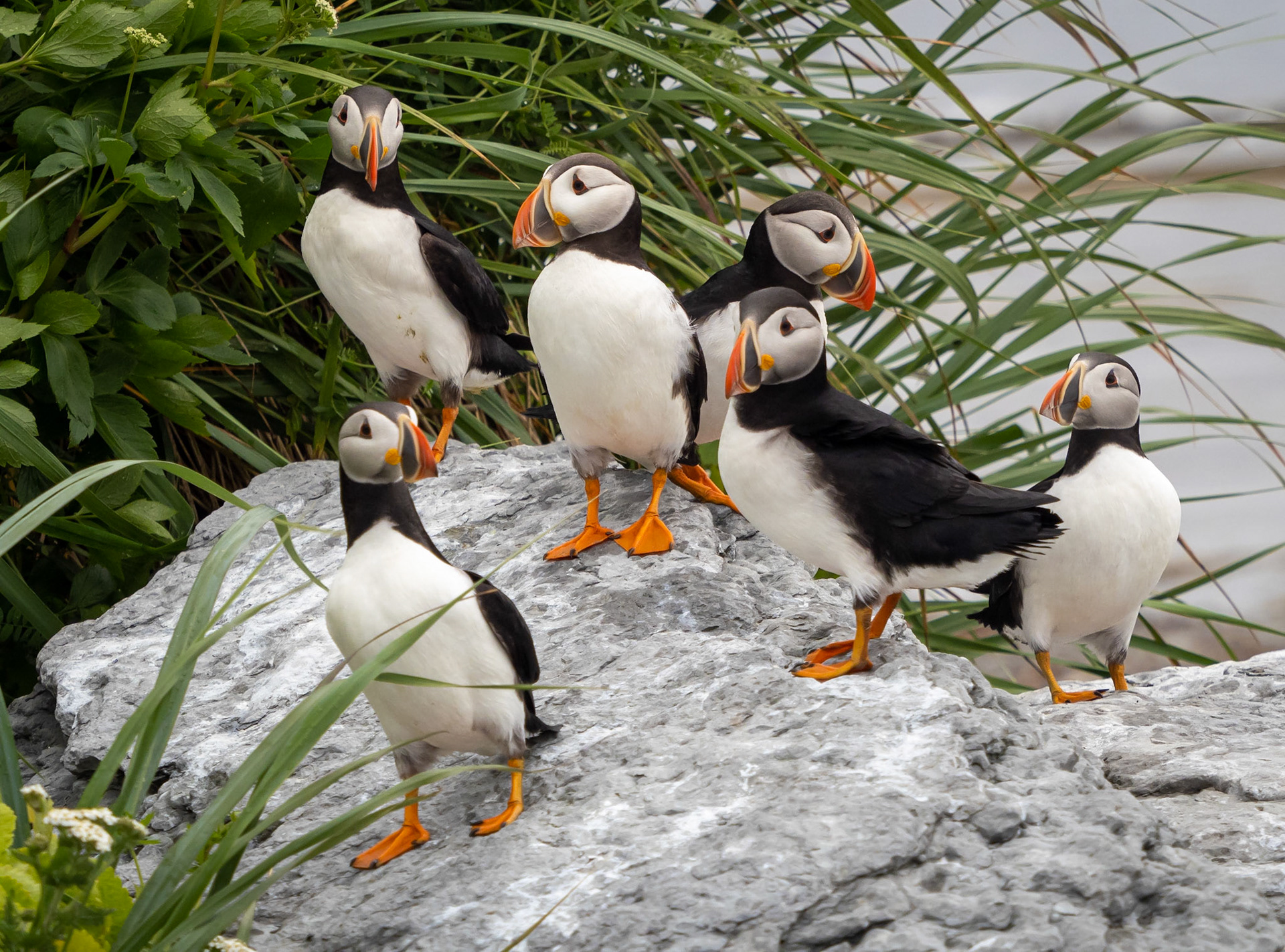
Late afternoon near the pathway coming up from the beach.
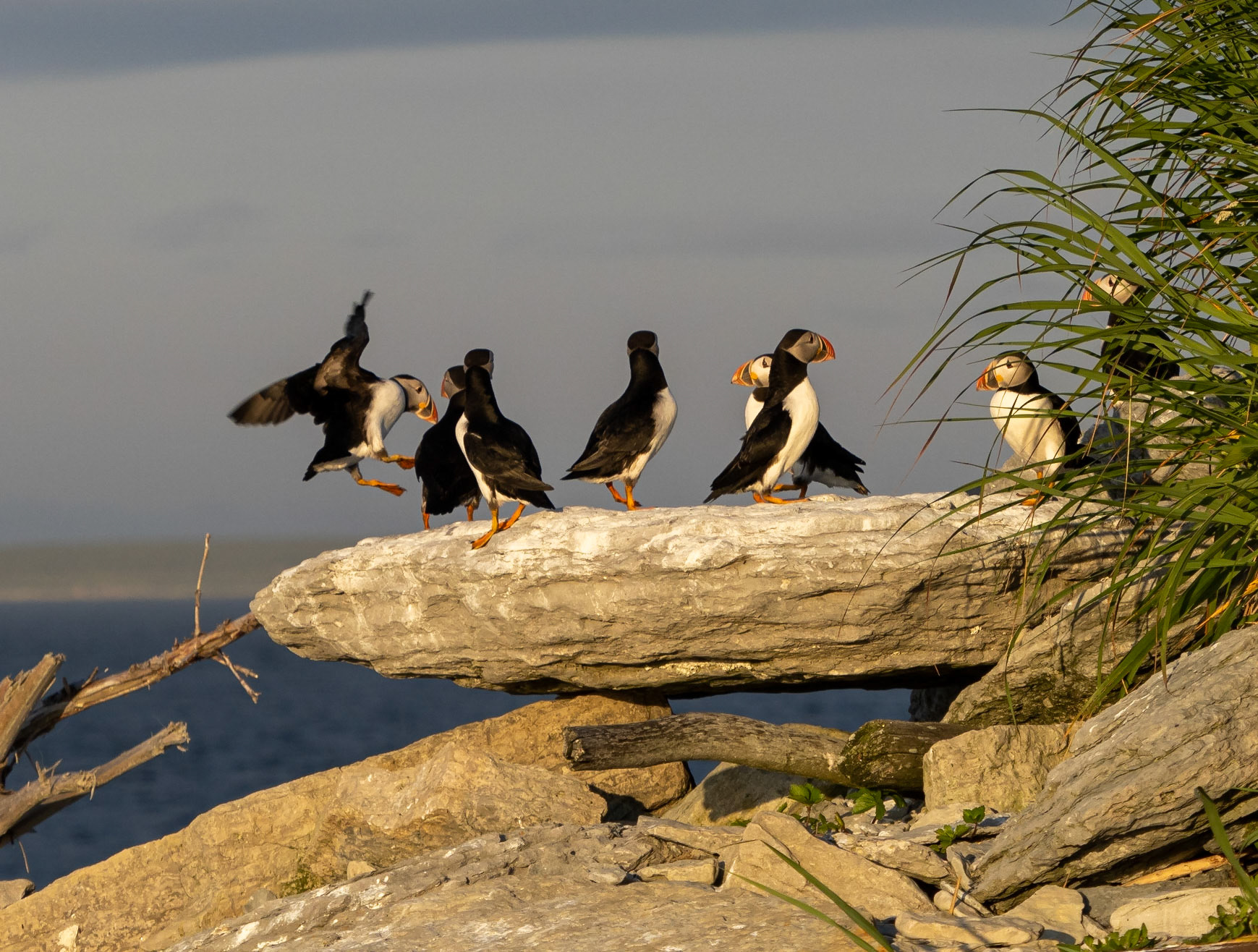
In the evenings, on rocks down at the water level
In the left picture, the puffin on the right is describing "the fish that got away", while in the right side picture, the others discuss his bragging, with one seeming saying "Are you sure you want to say that?".
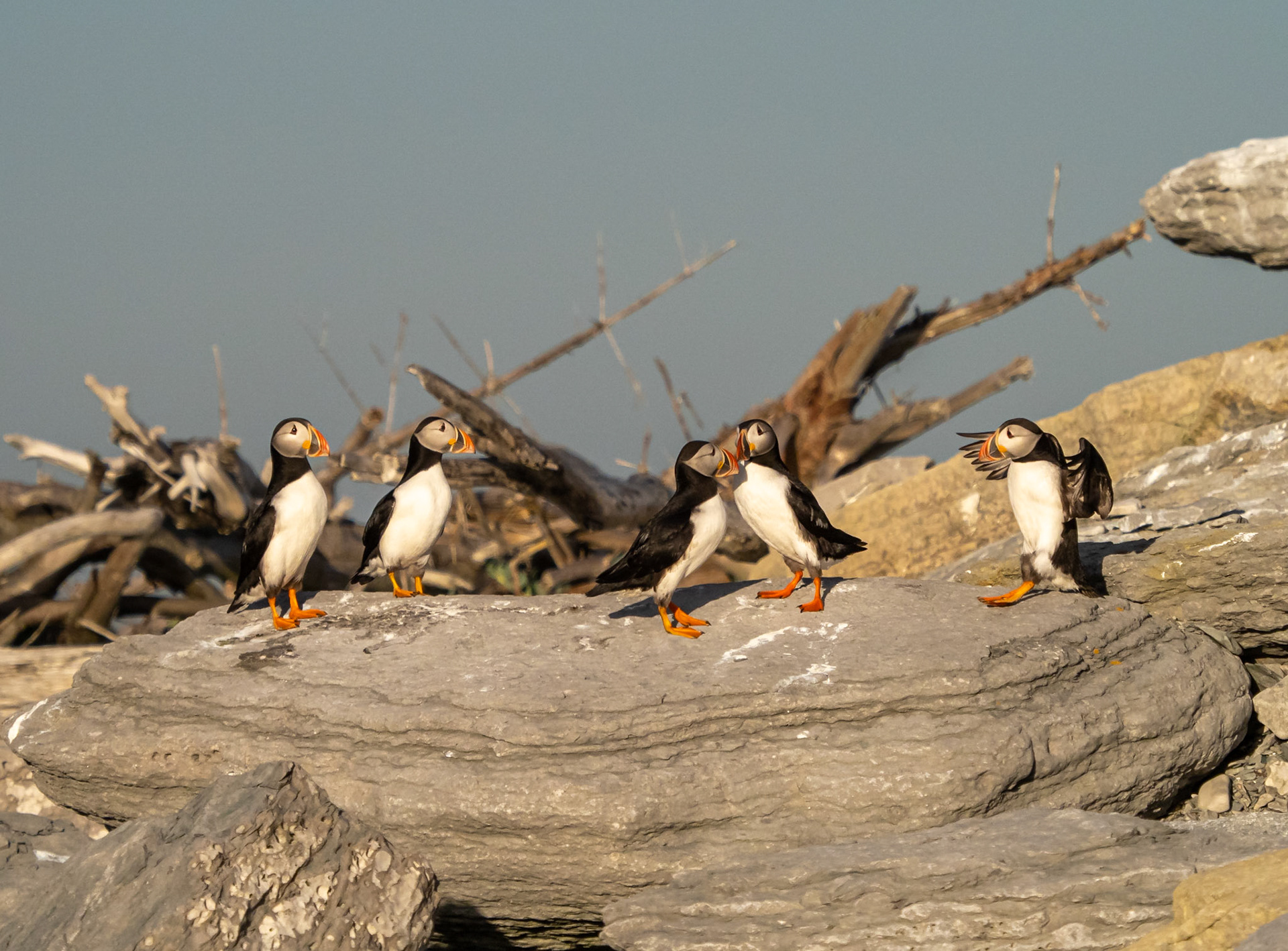
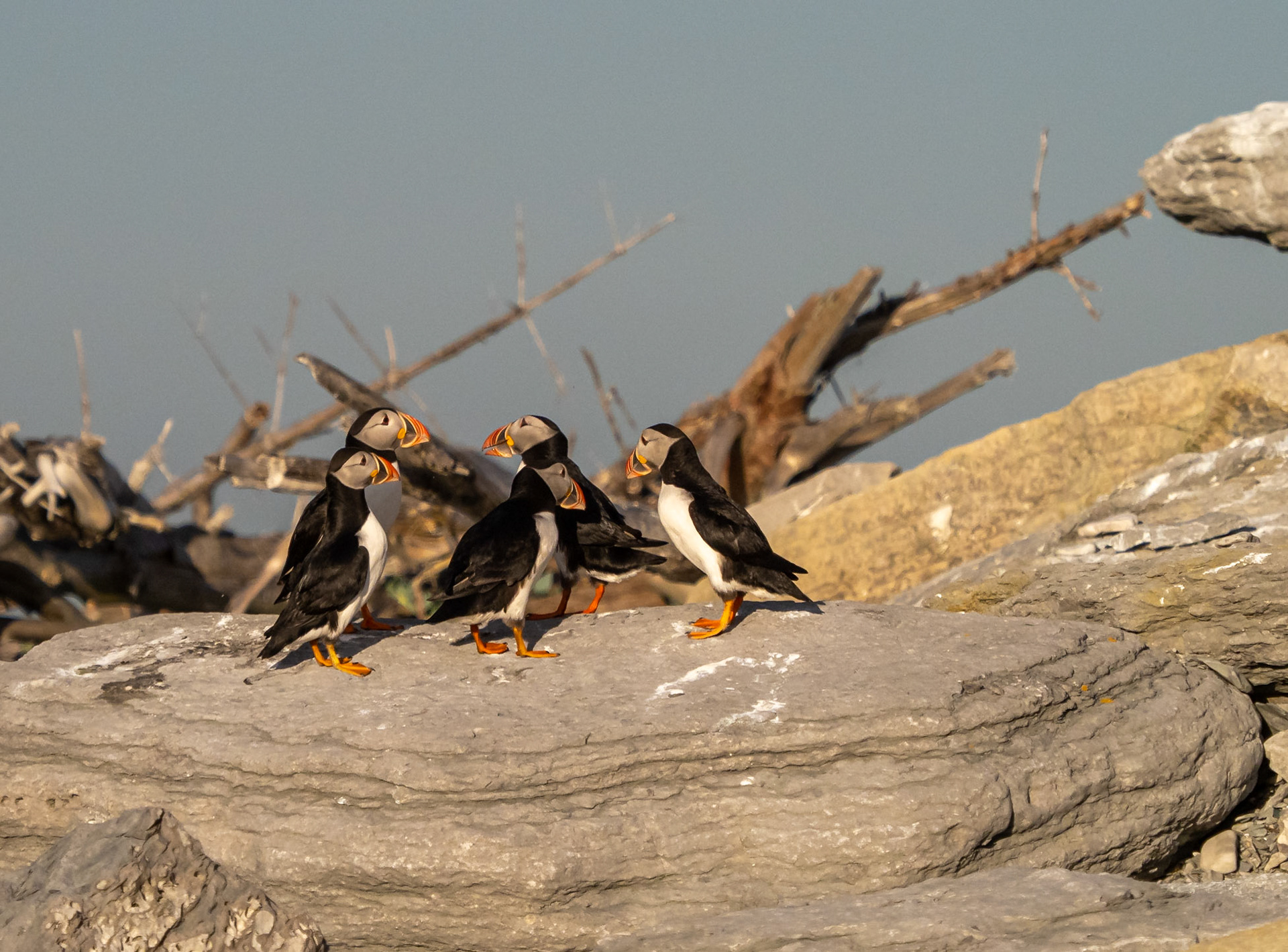
There is constant coming and going all day long.
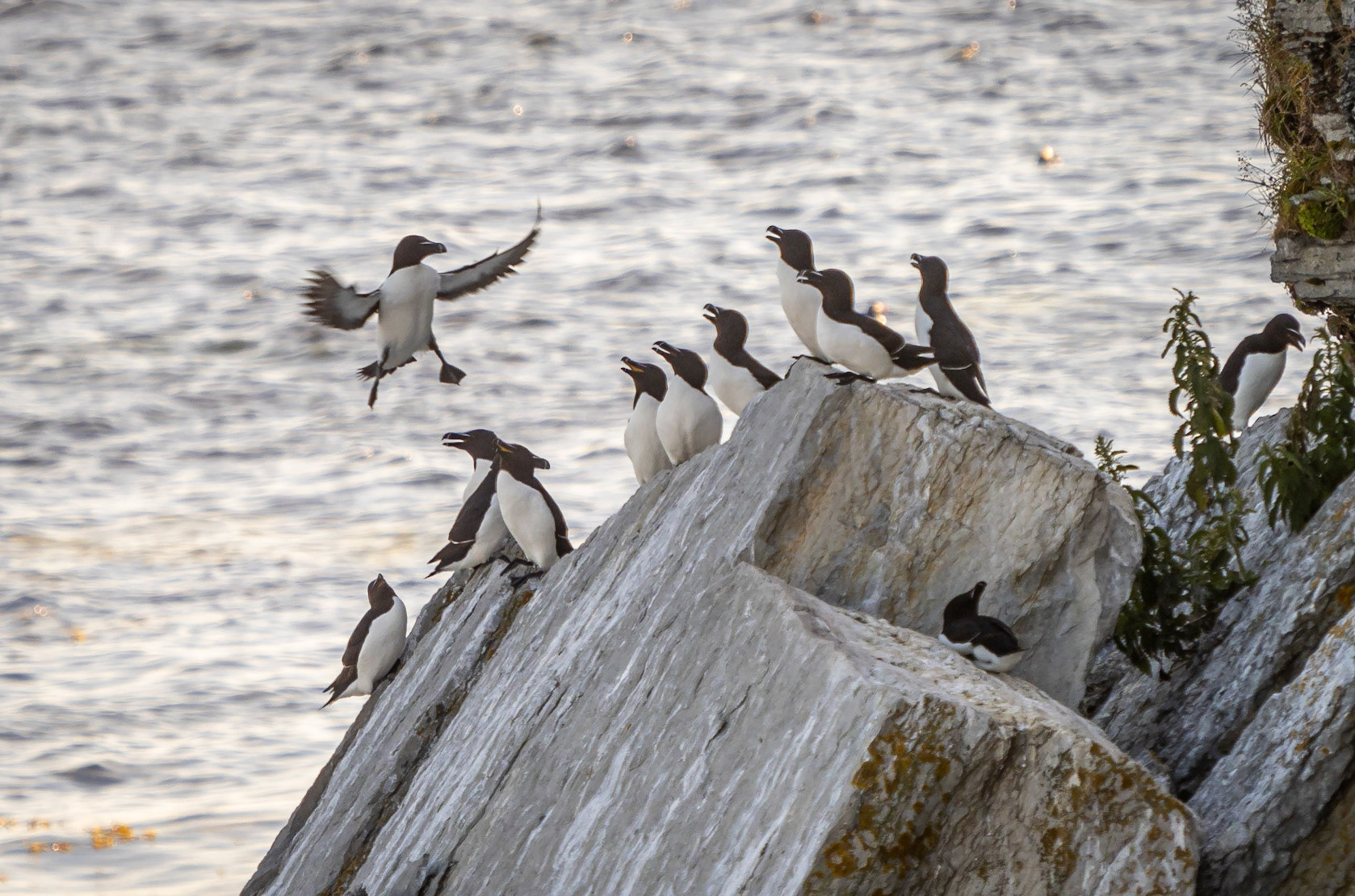
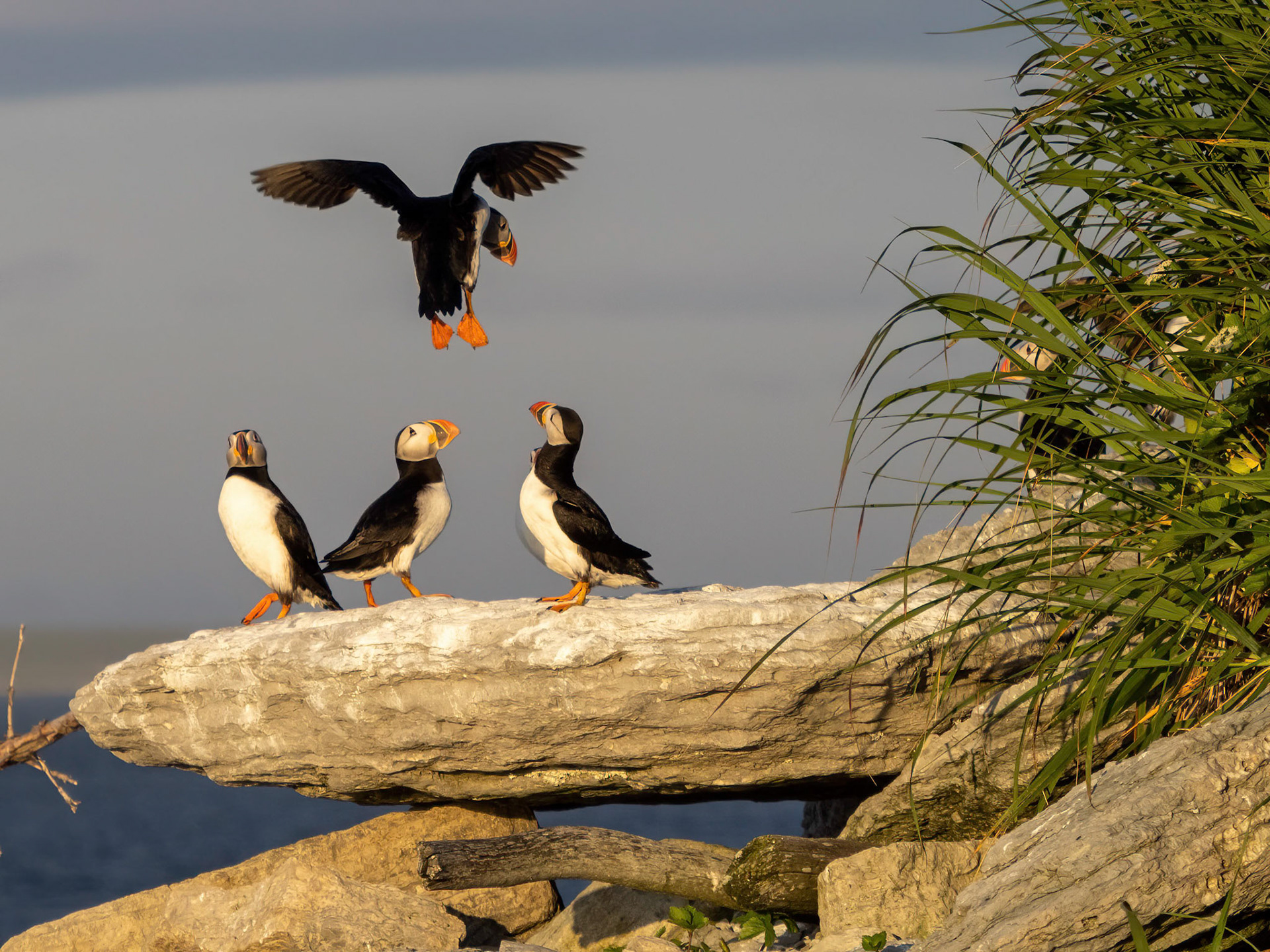
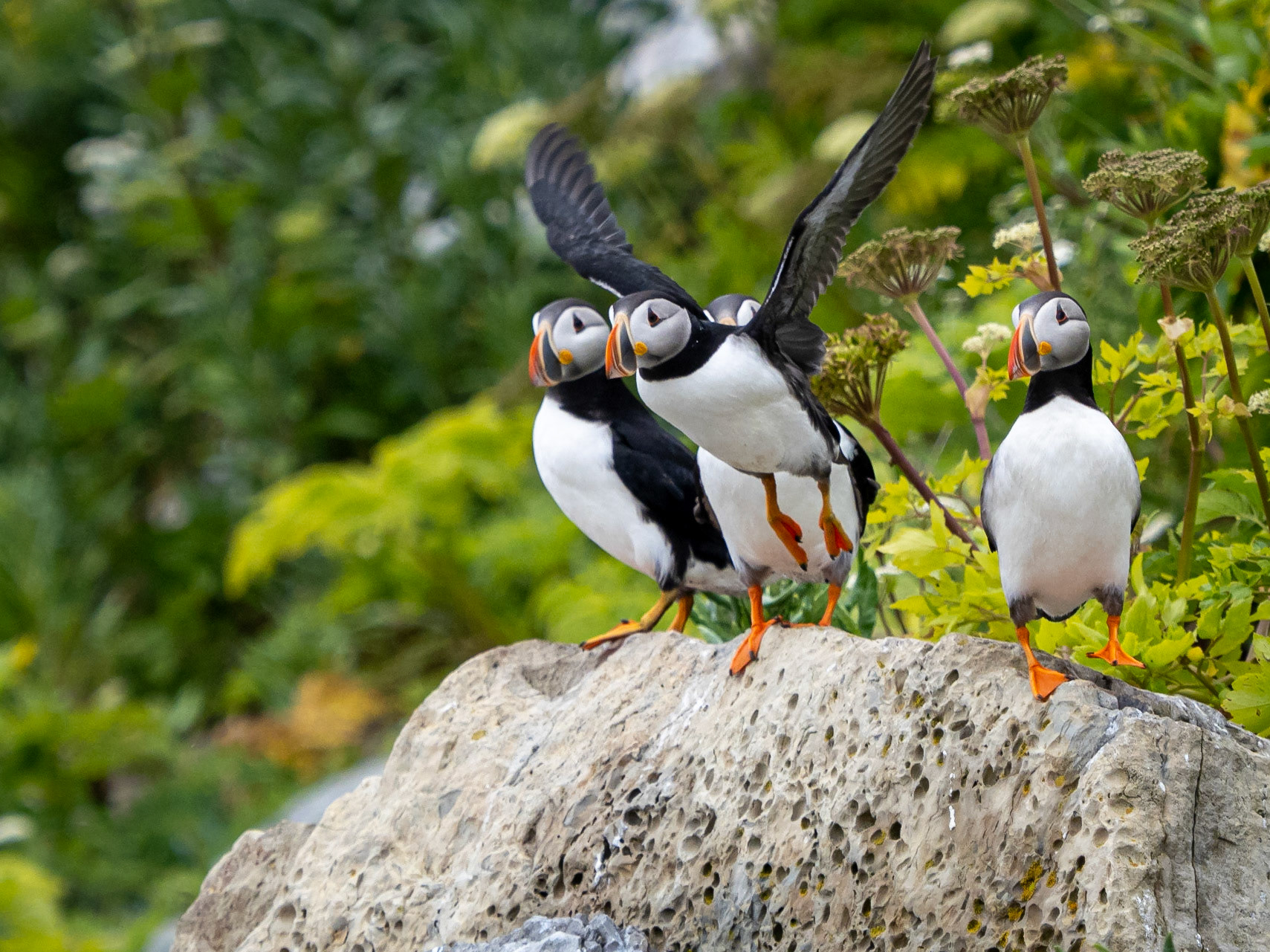

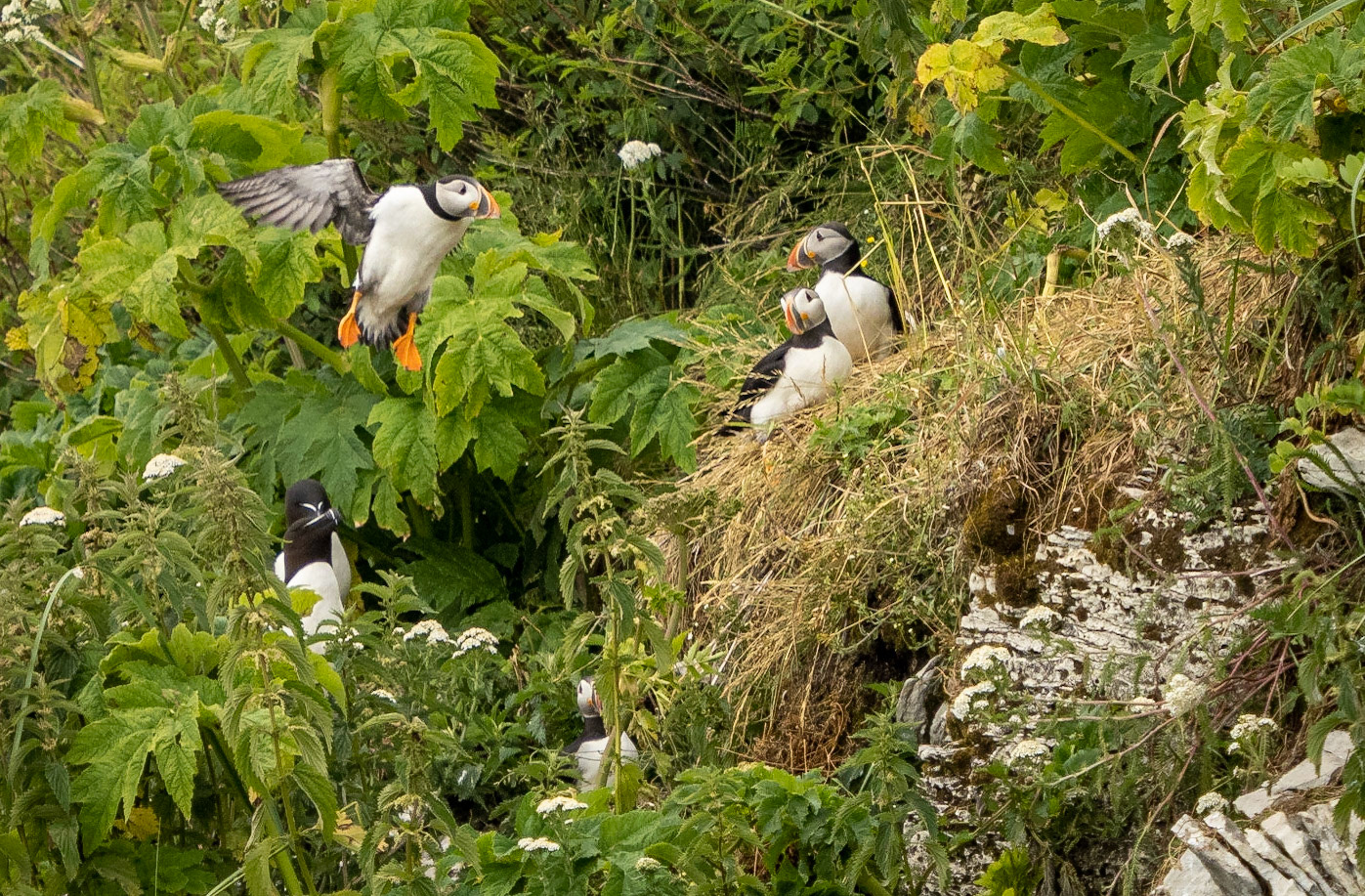
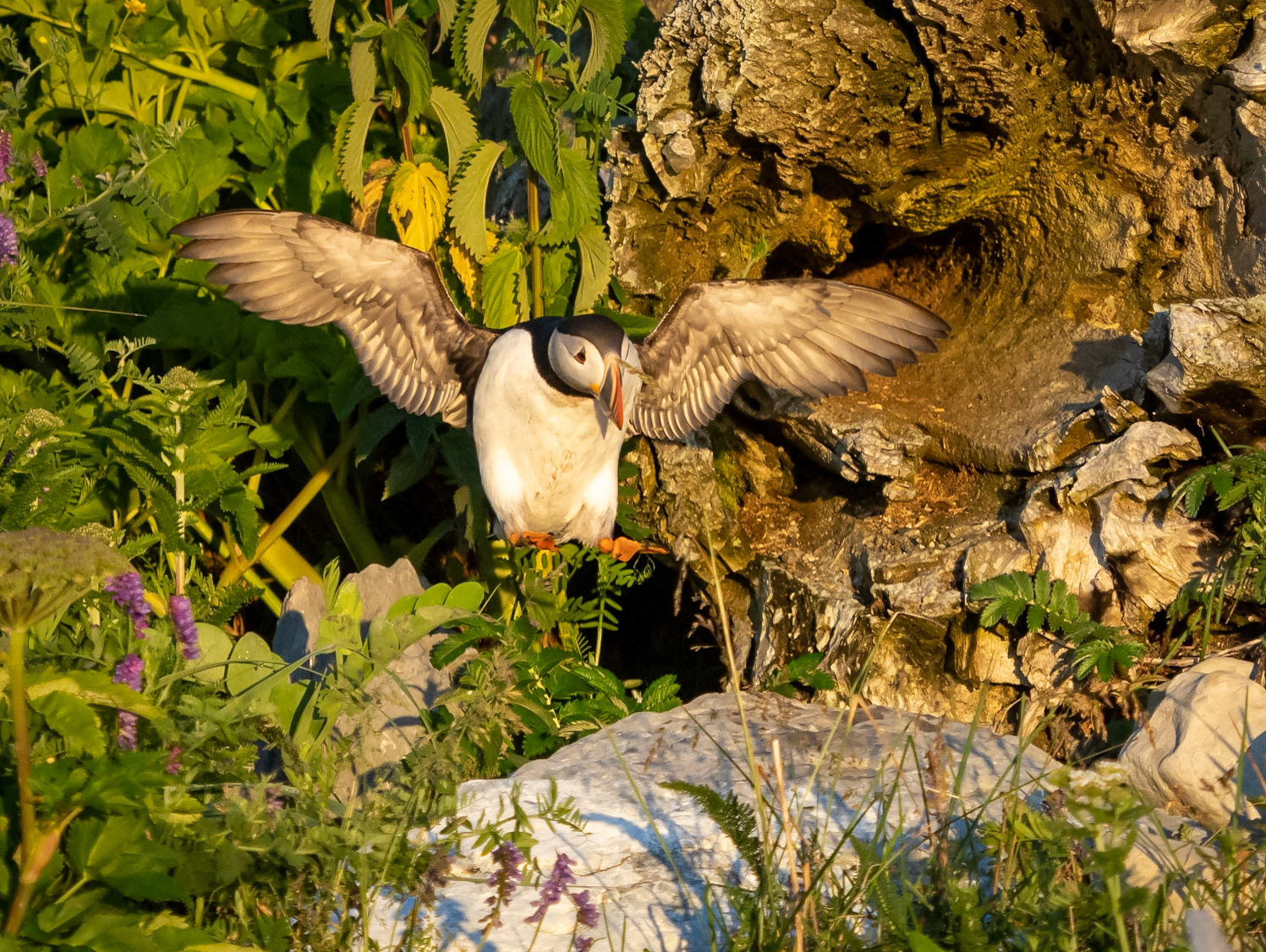
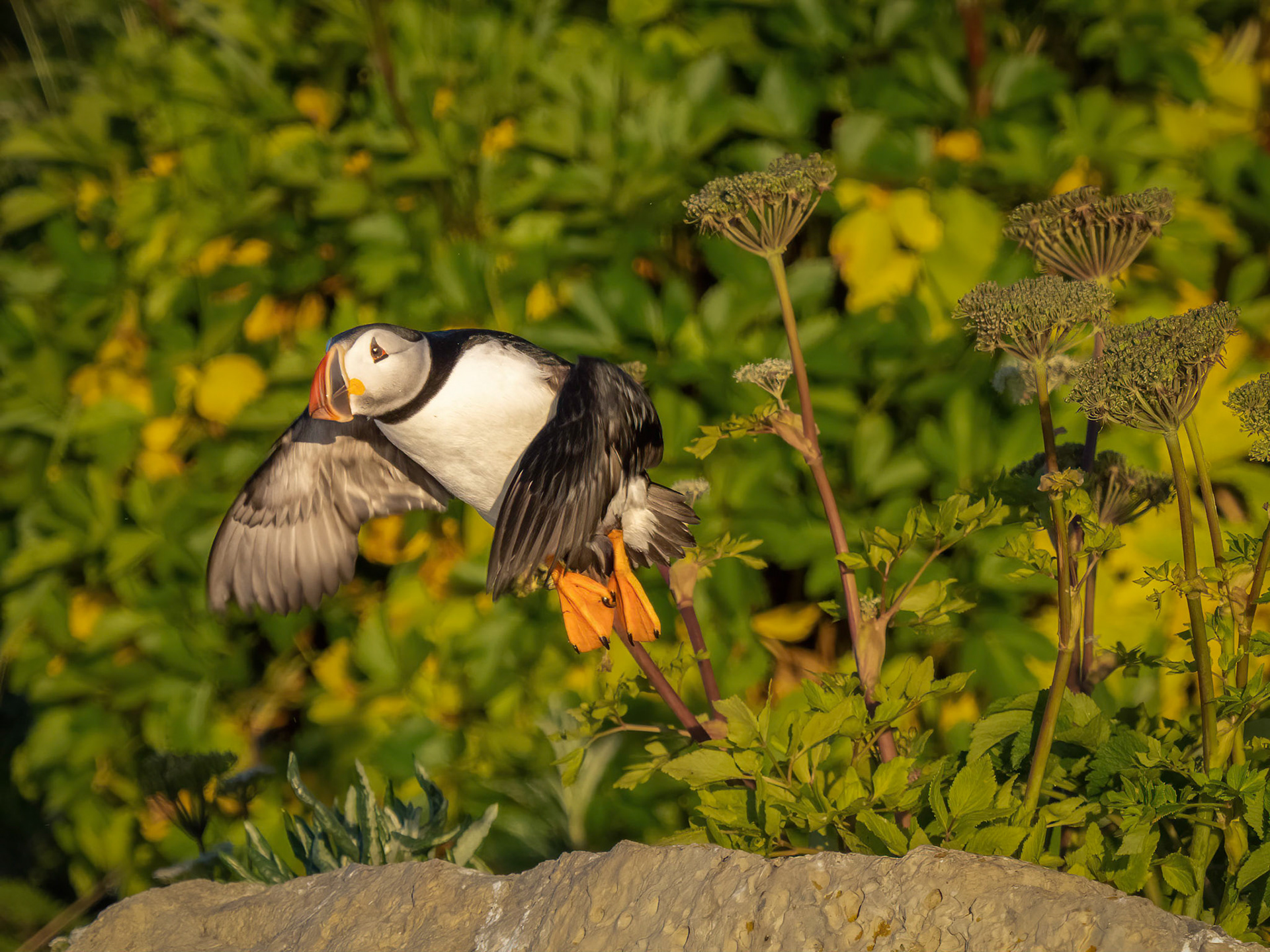


But as much as they are always busy, some enjoy a break...



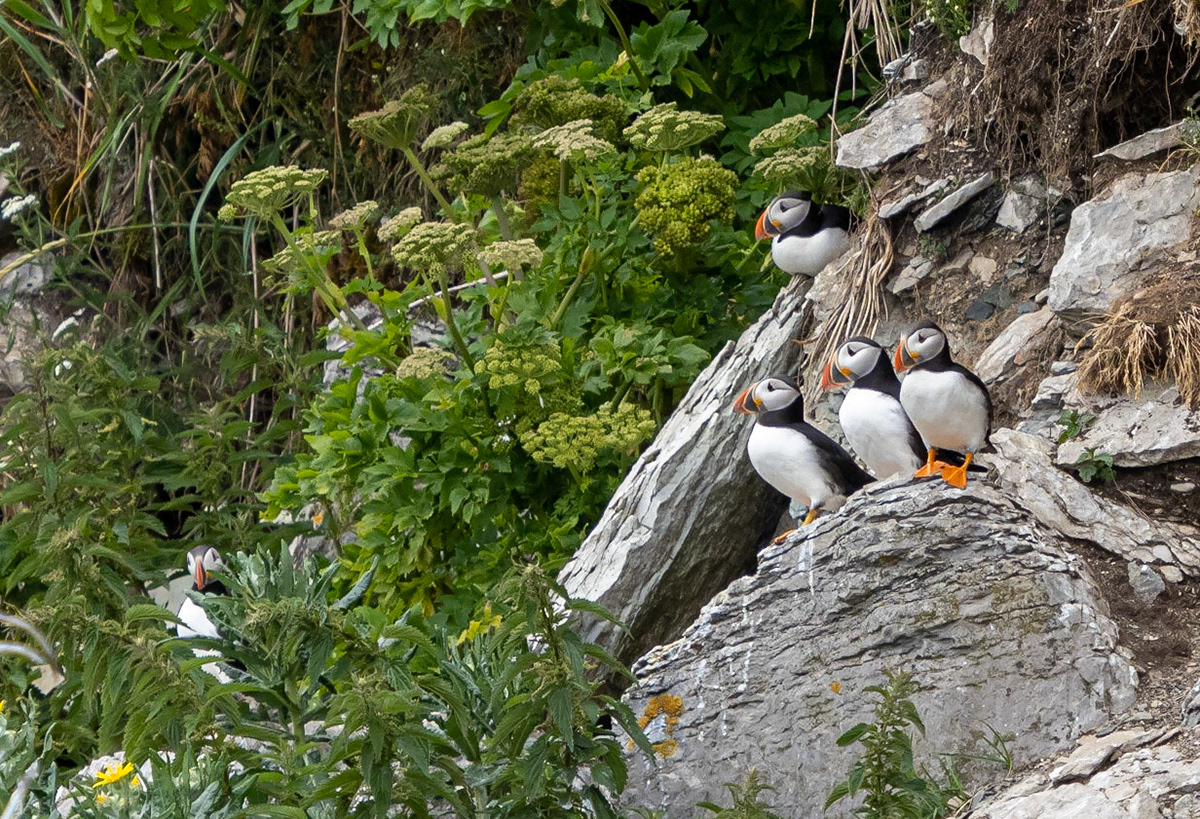

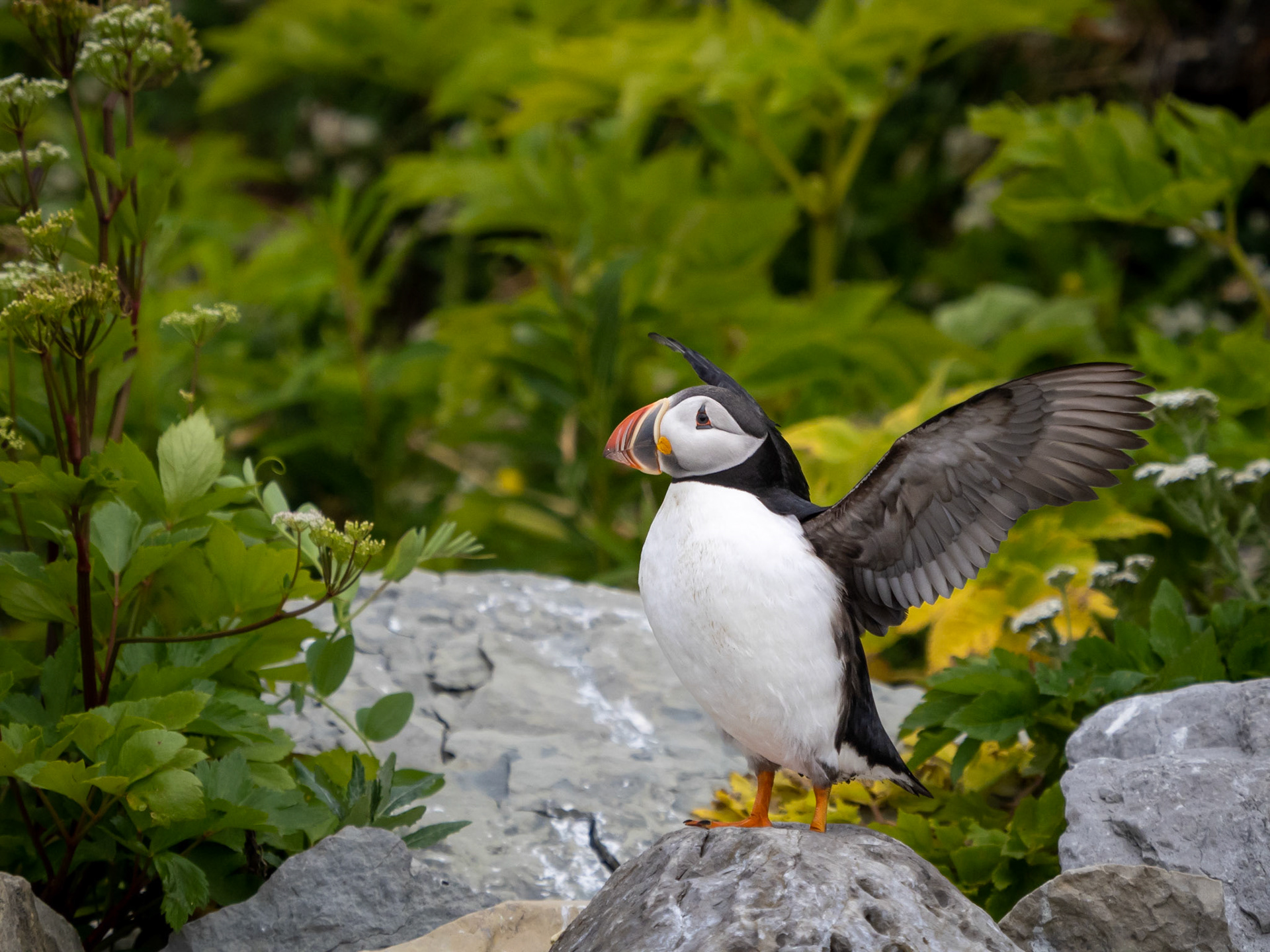
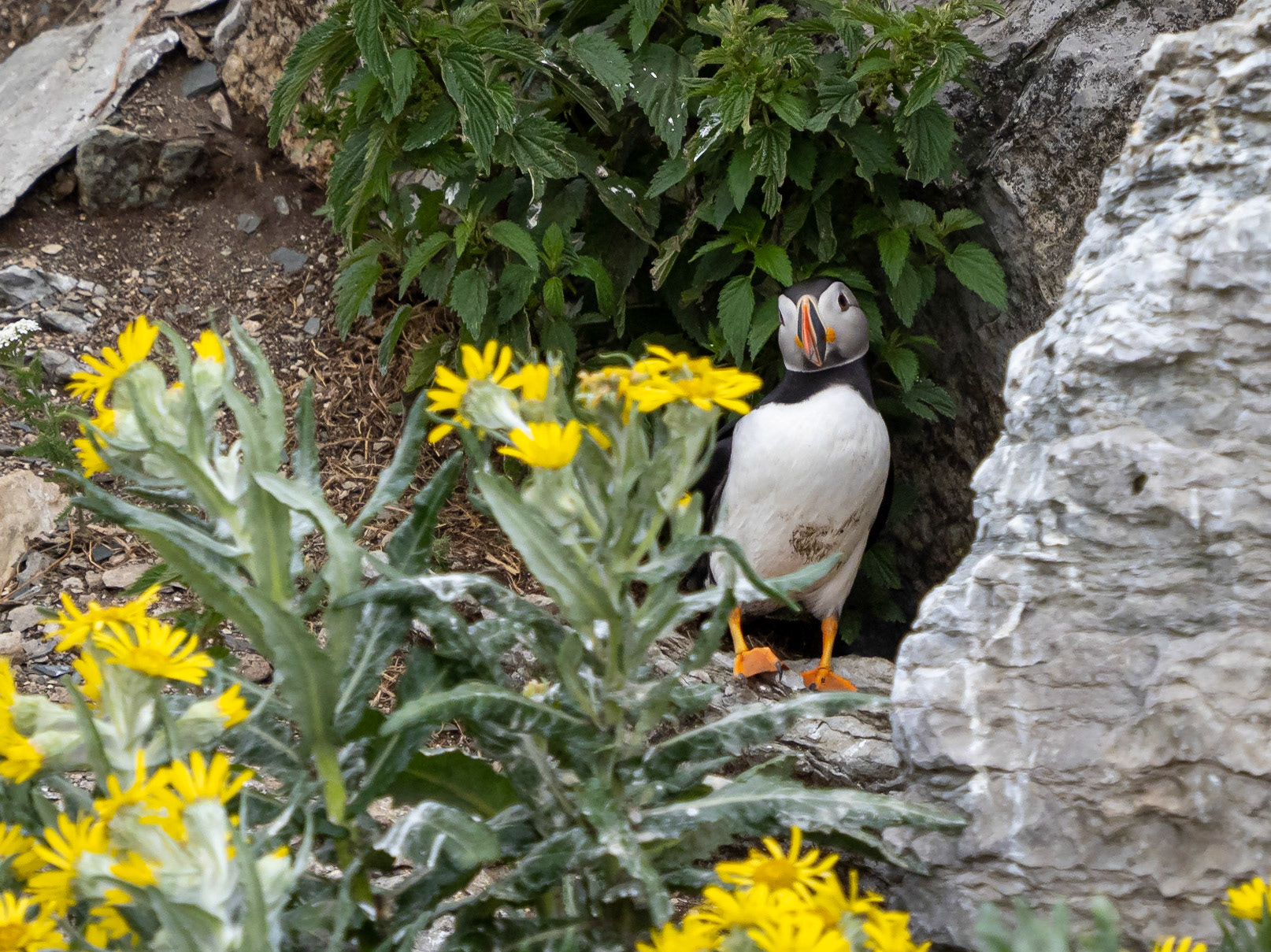
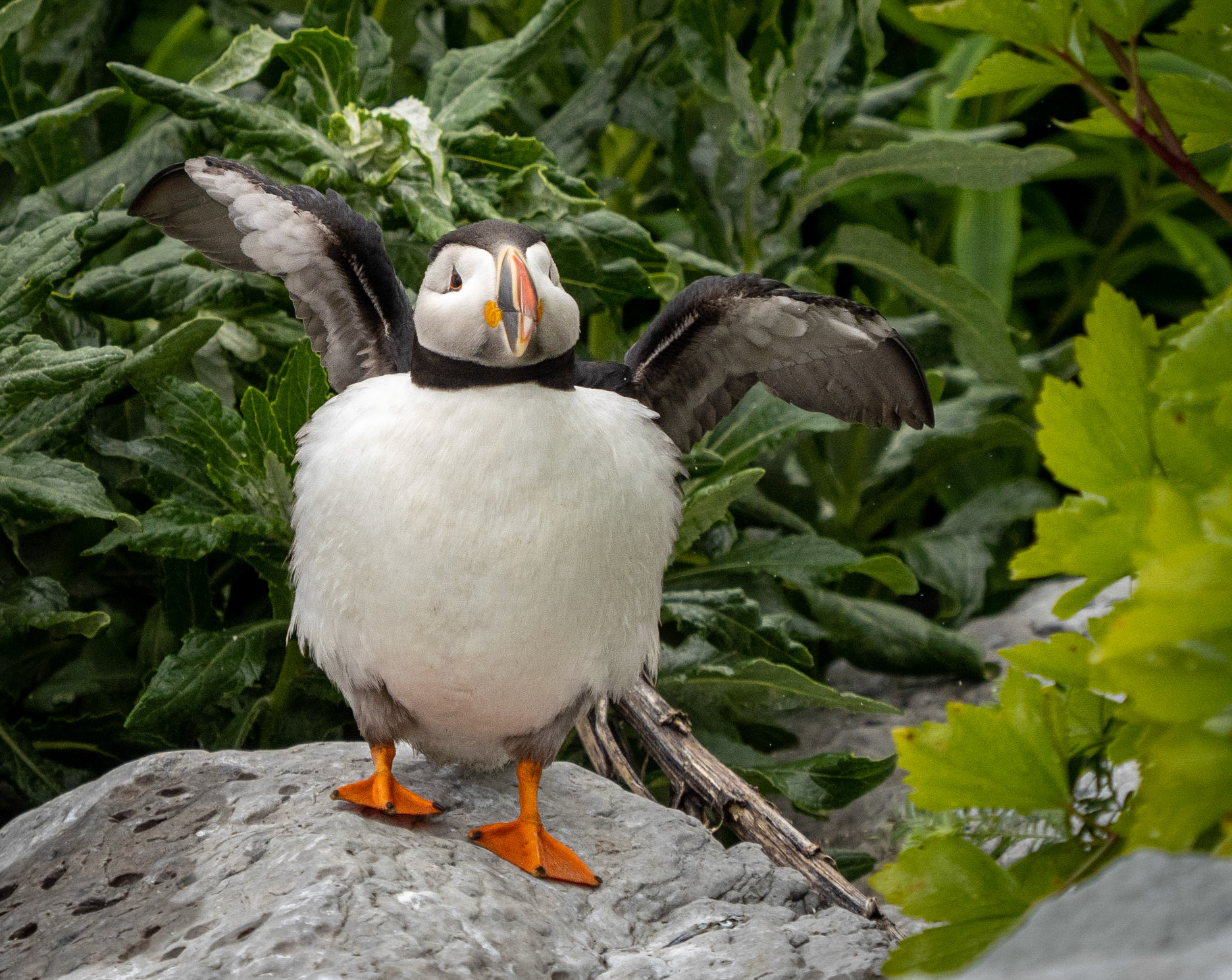
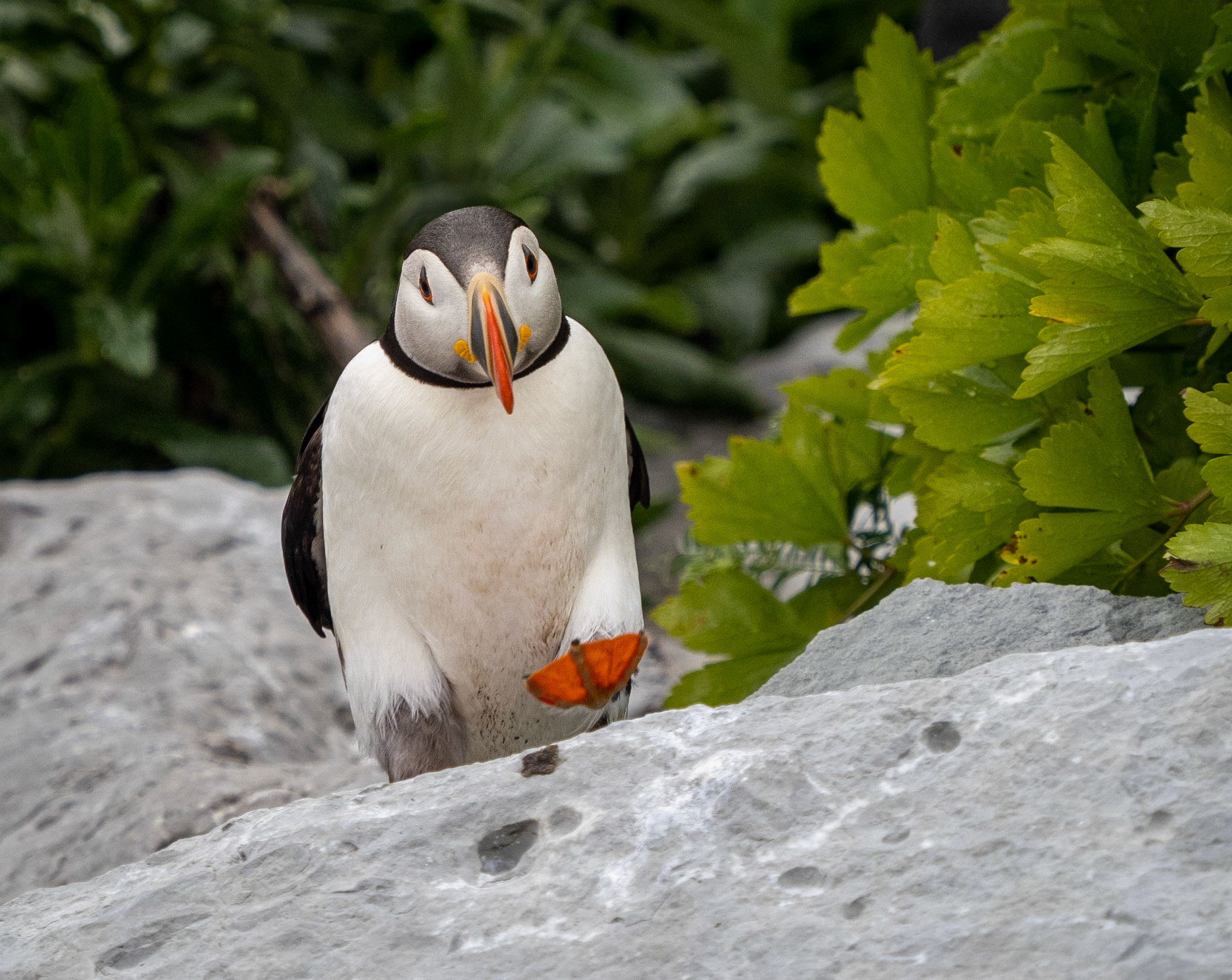
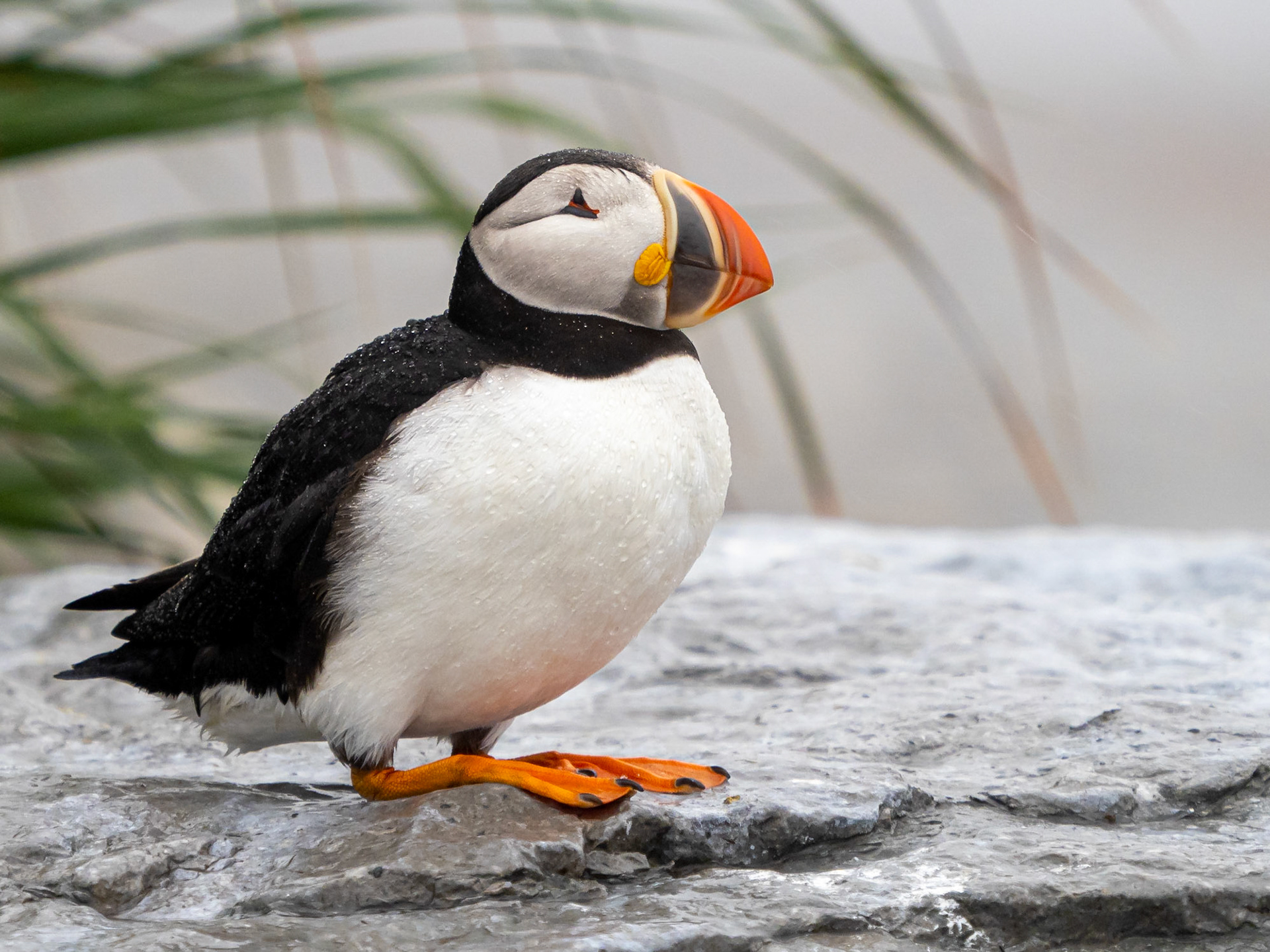
Both the razorbills and puffins, at 80kmph, are very fast flyers, which makes catching them in flight a challenge. But if you stand in one place and keep trying, you'll capture some OK images, hopefully of some bringing in the fish.

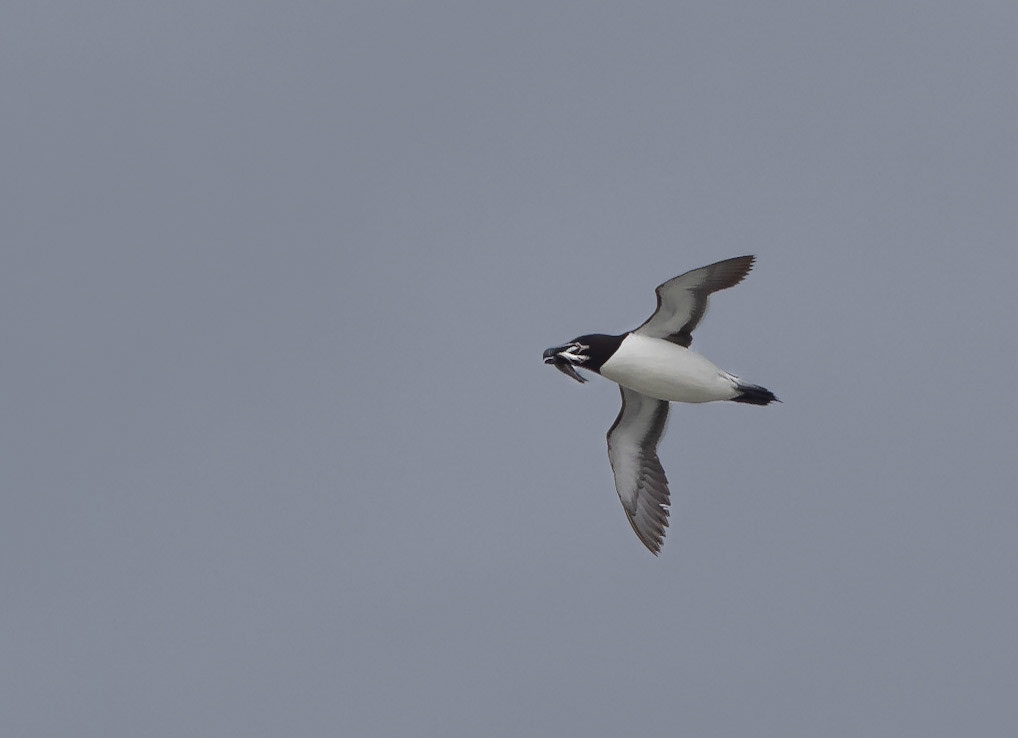
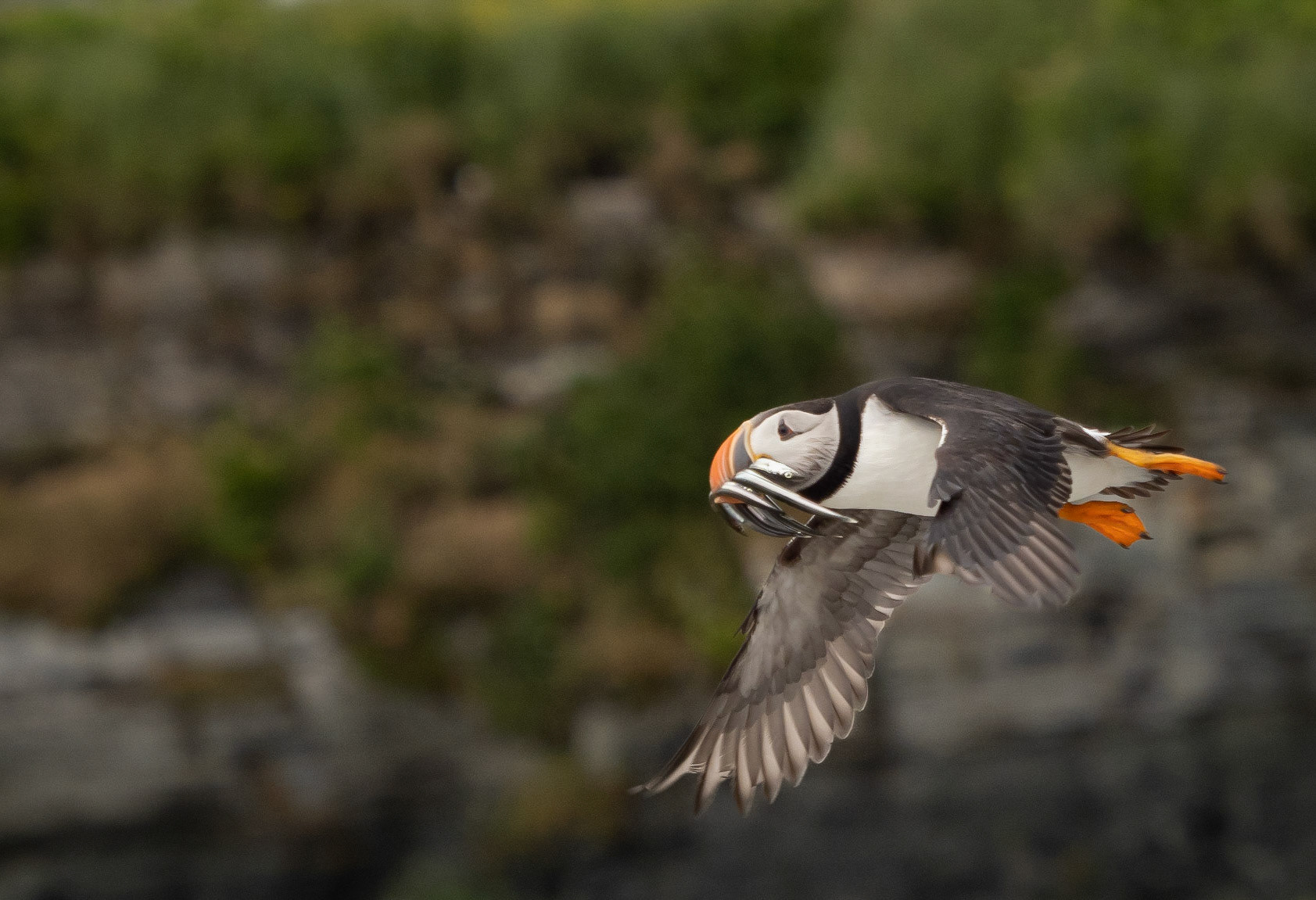
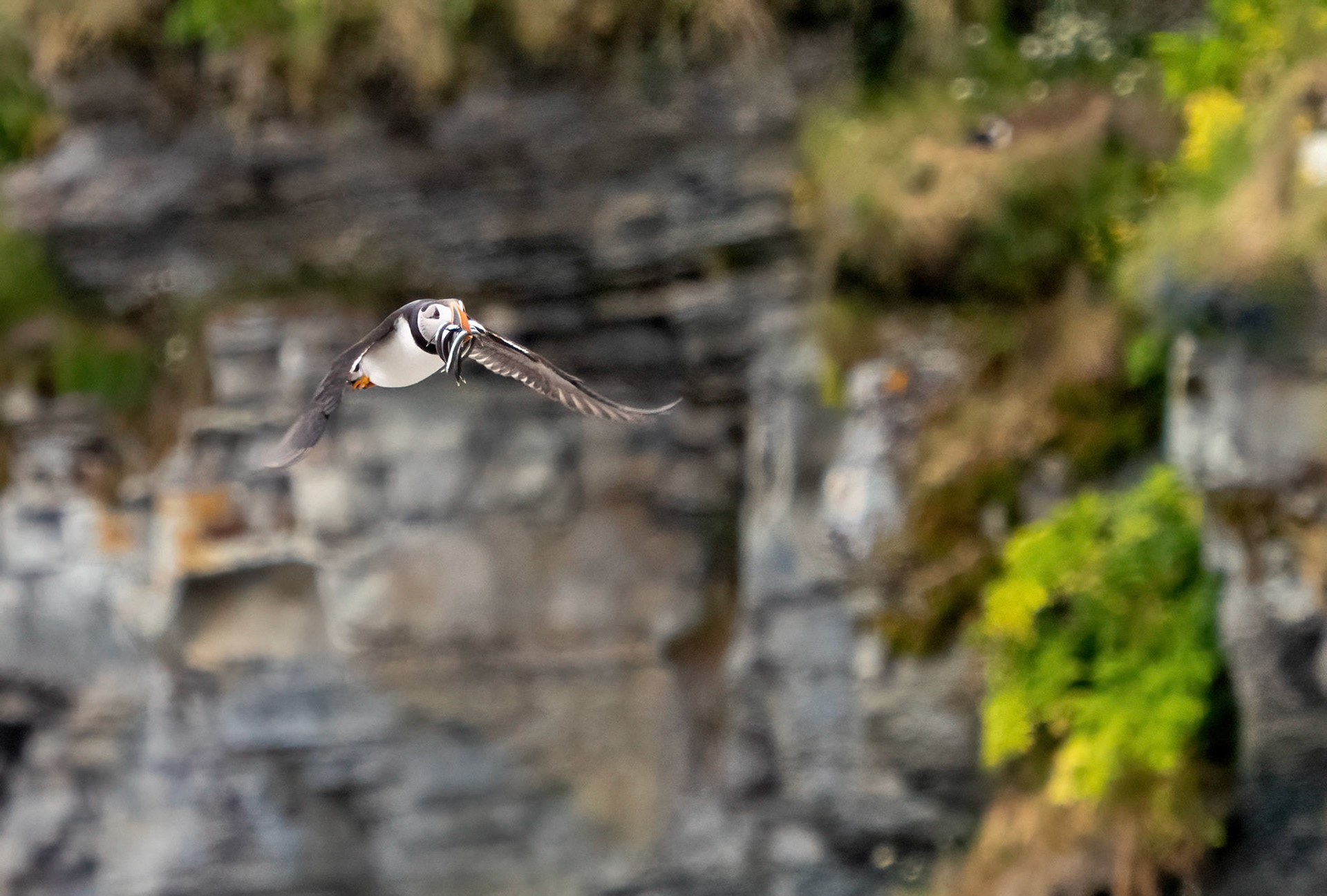

Normally they fly directly into the burrow with their fish, but sometimes one isn't quite so fast.

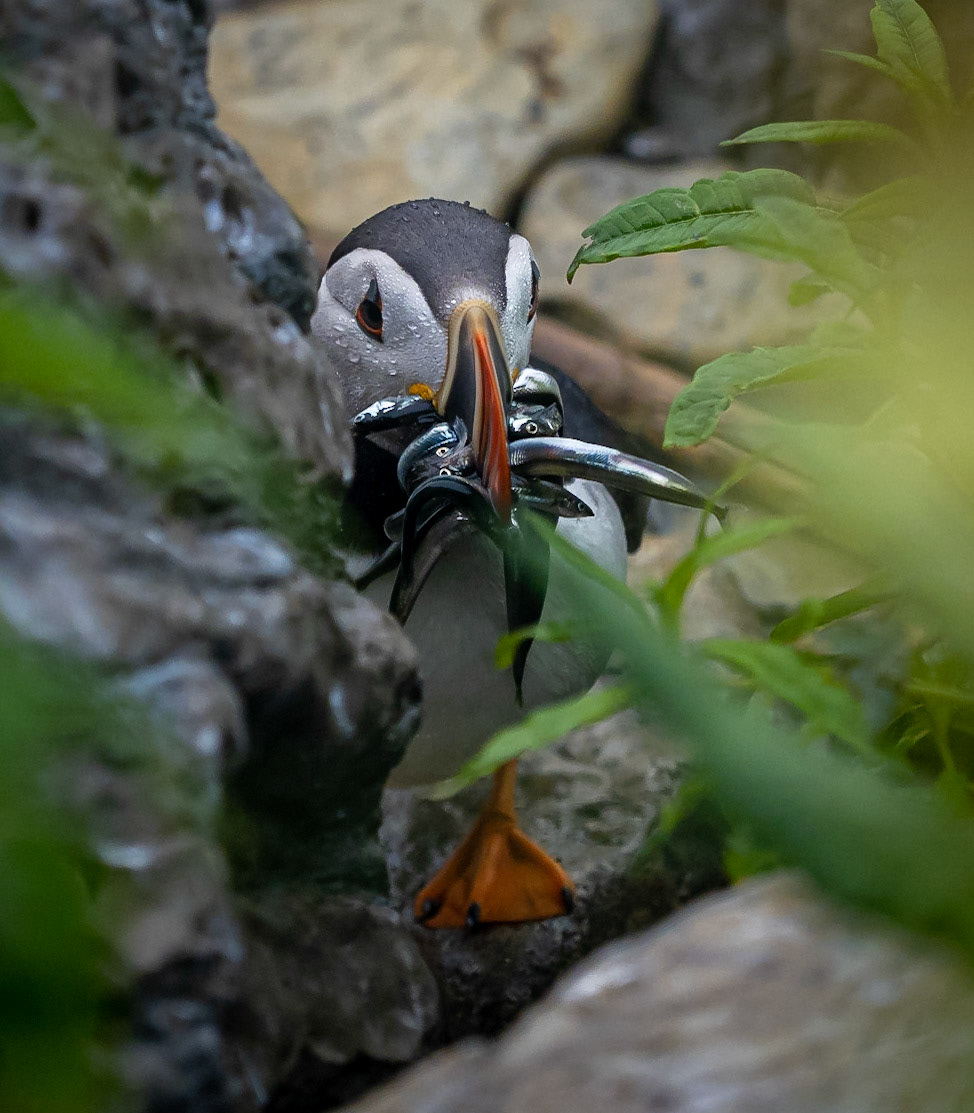
The eider ducks are much shyer and keep their distance. One fog filled morning, there were only two us up early, walking down the path quietly; the eiders were well off to the side out in the fog some 150 to 200 metres away, but they moved off when they sensed our presence.
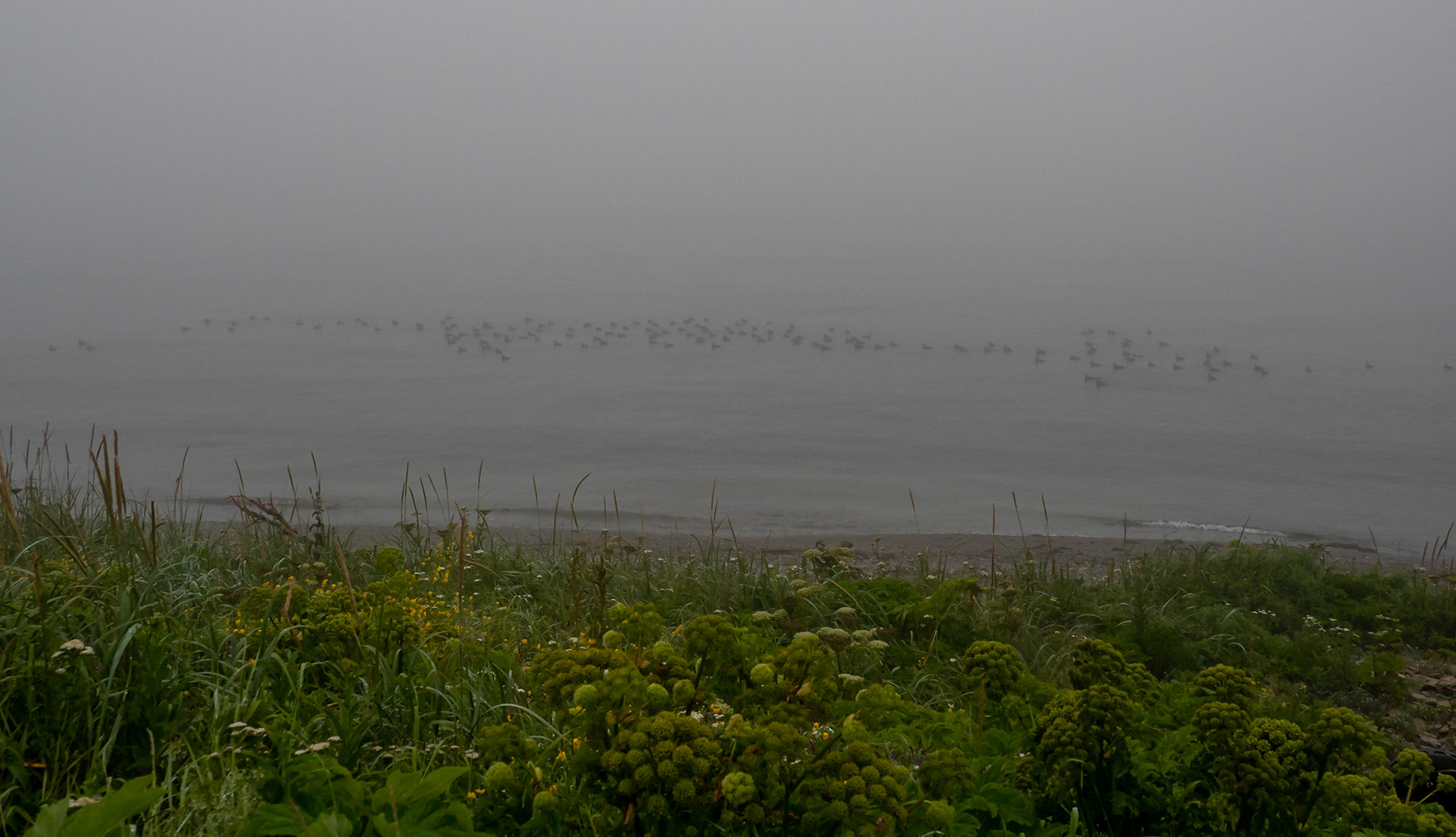

Two other birds on the island. The savannah sparrow, left, hung out in the grasses, they were maybe 5-10 of them. The one or two red-breasted nuthatches checked the driftwood for bugs.
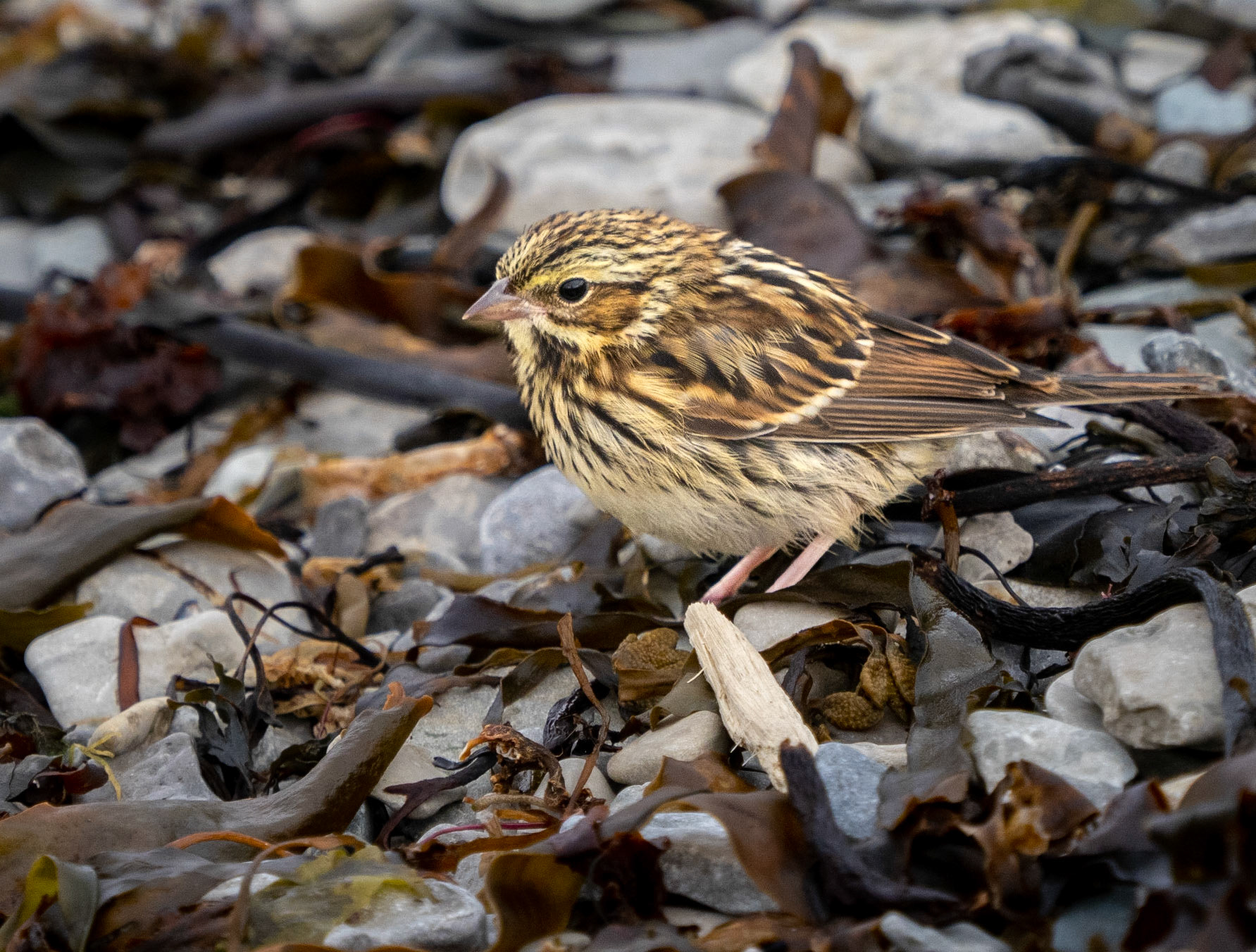

For a few hours one day there was a jellyfish close to shore.
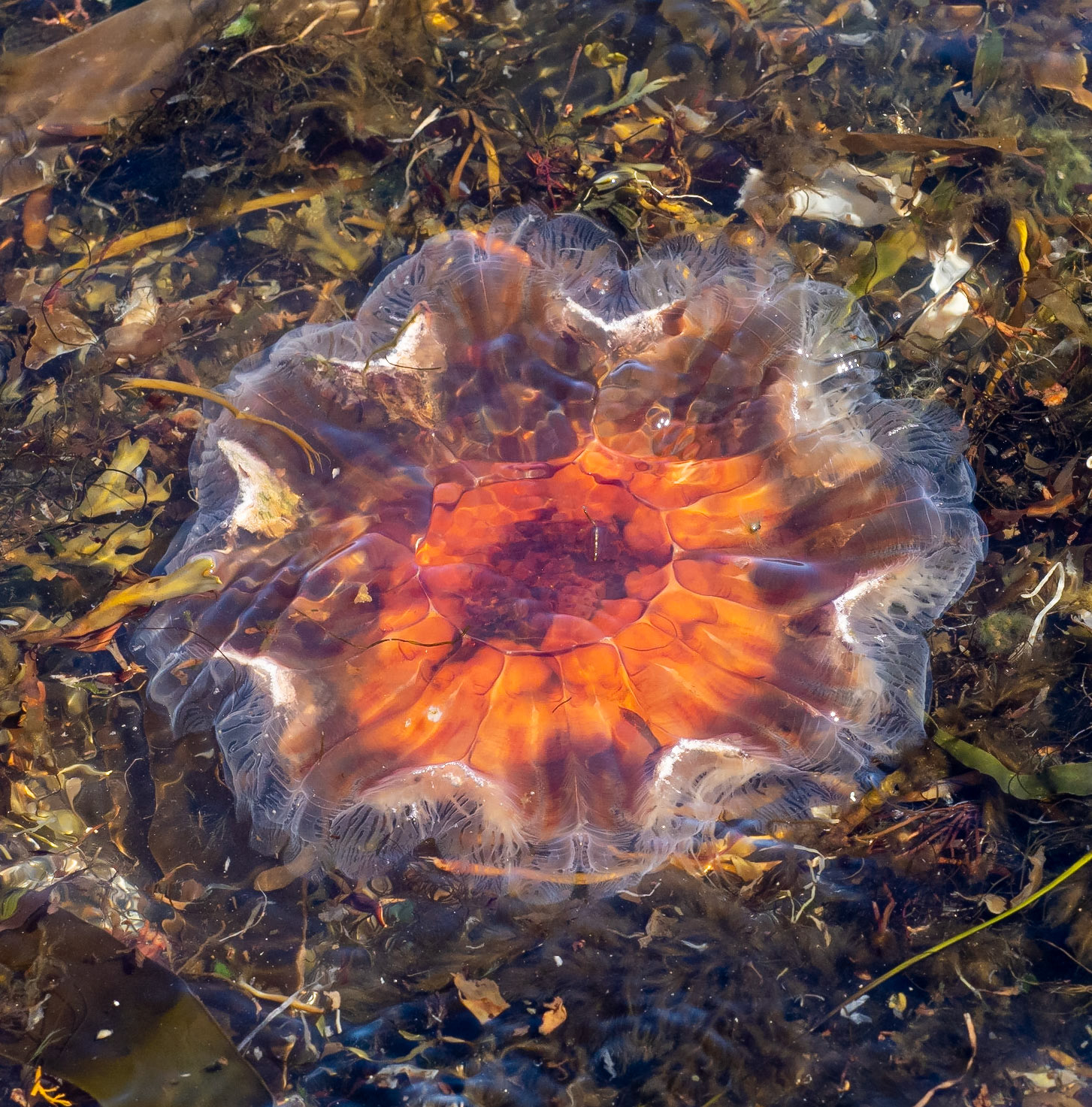
The island was covered with tall grass, but they were also a number of flowers blooming.
Oysterplant, buttercup, seaside ragwort and vetch.
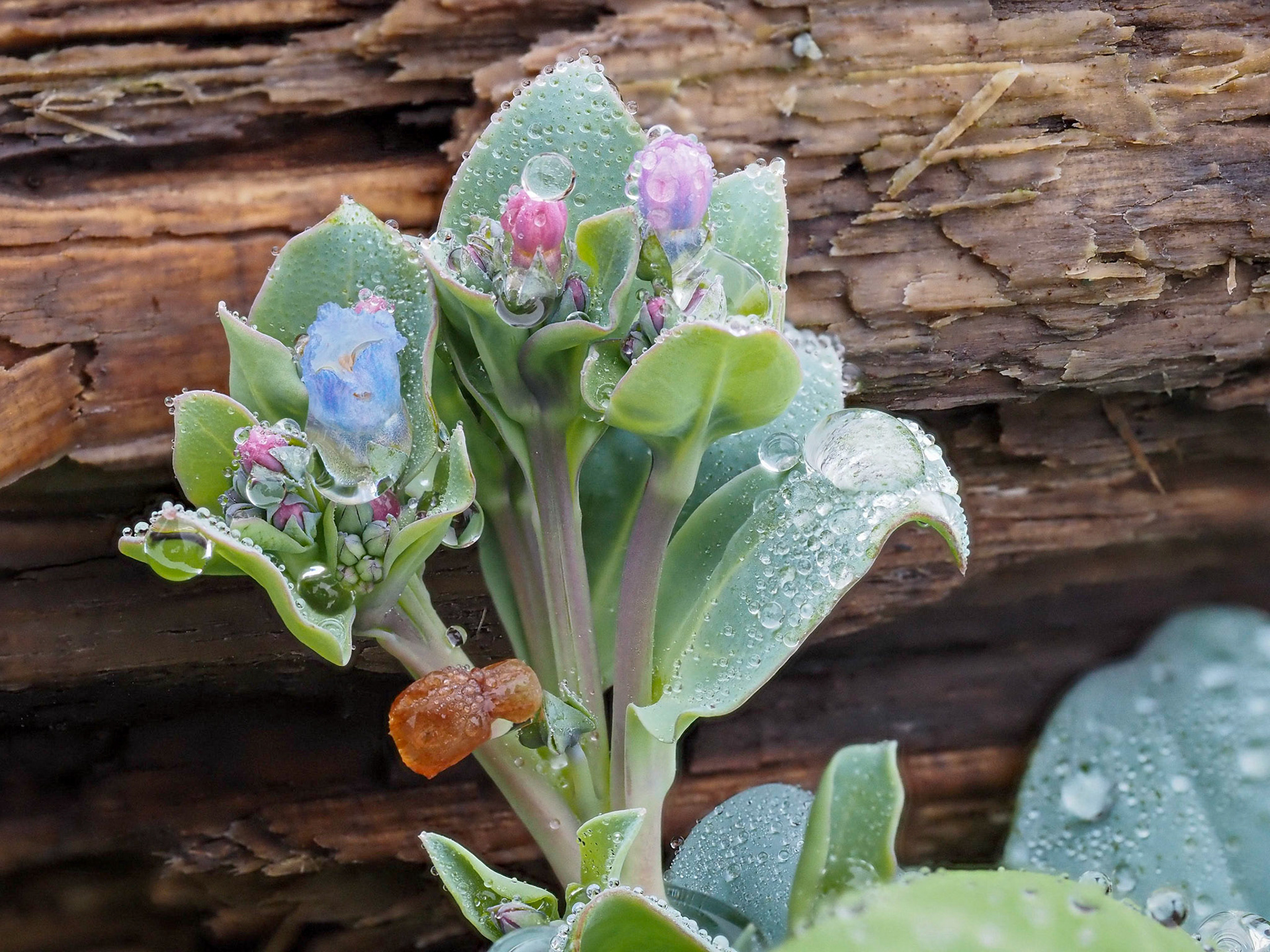
Oysterplant

Buttercup (and fly)
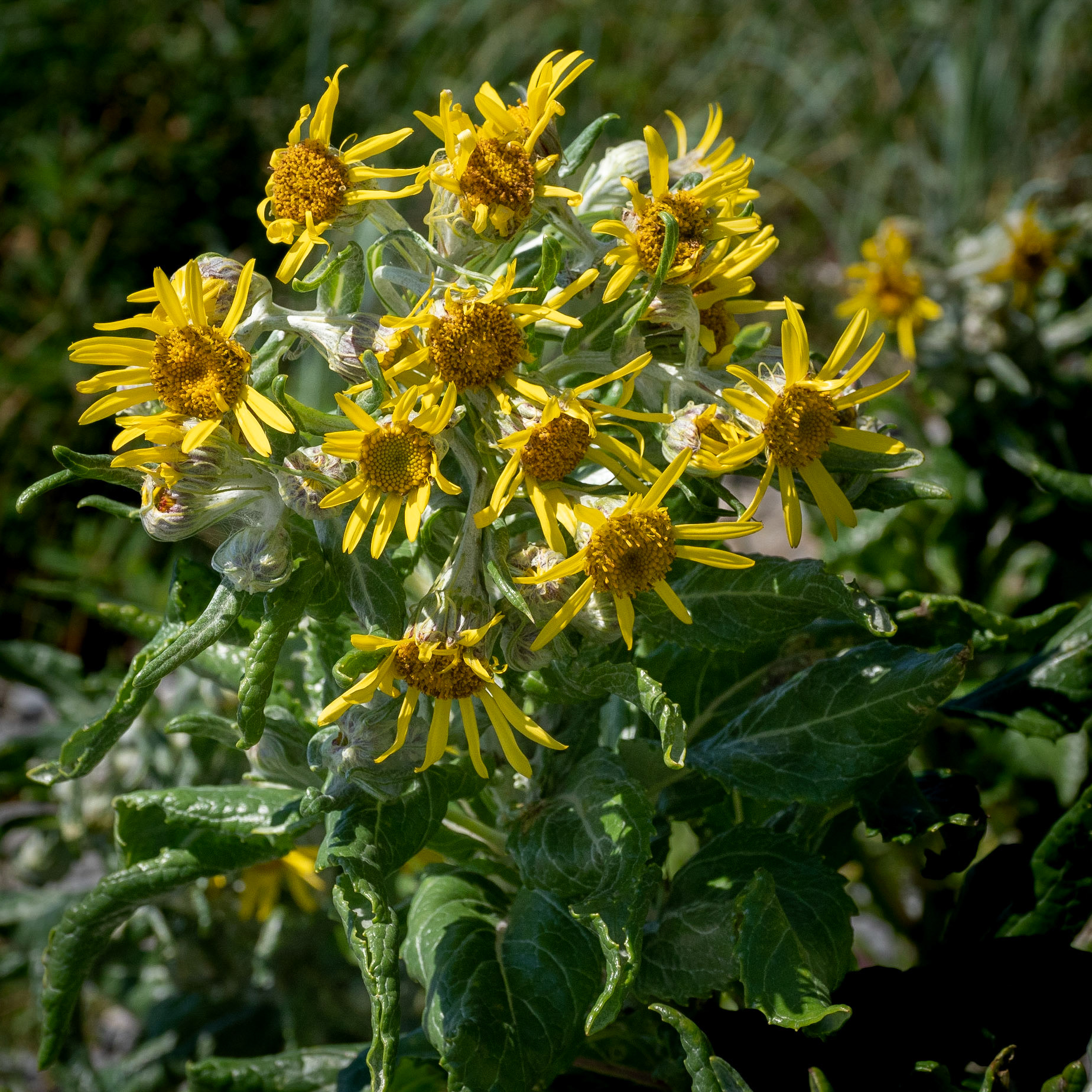
Seaside ragwort

Vetch
Also in bloom was the giant hogweed plant that is considered dangerous here at home. A similar, but harmless lookalike, garden angelica, was growing everywhere.

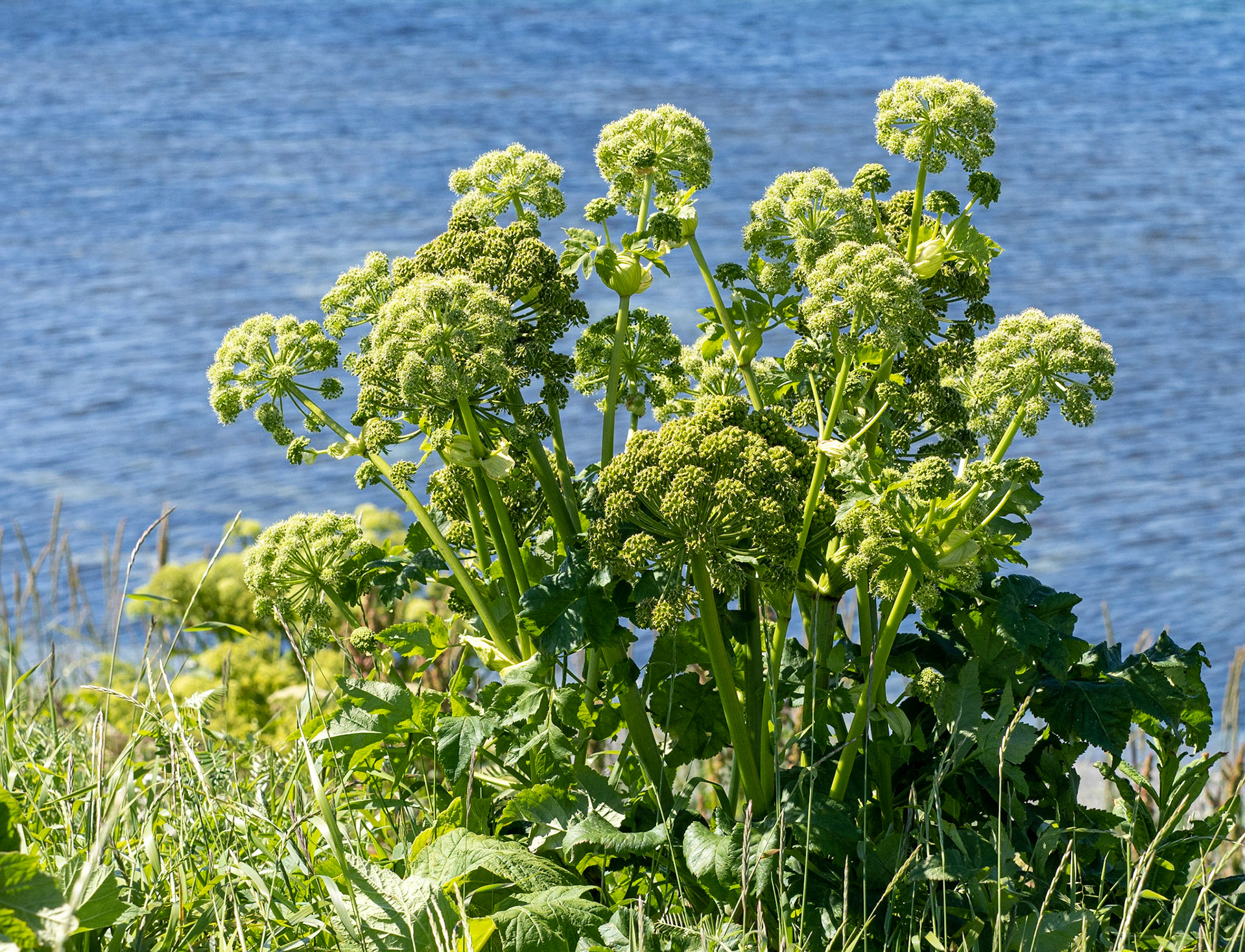
The lighthouse, built in 1951 and automated in 1981, is operational.
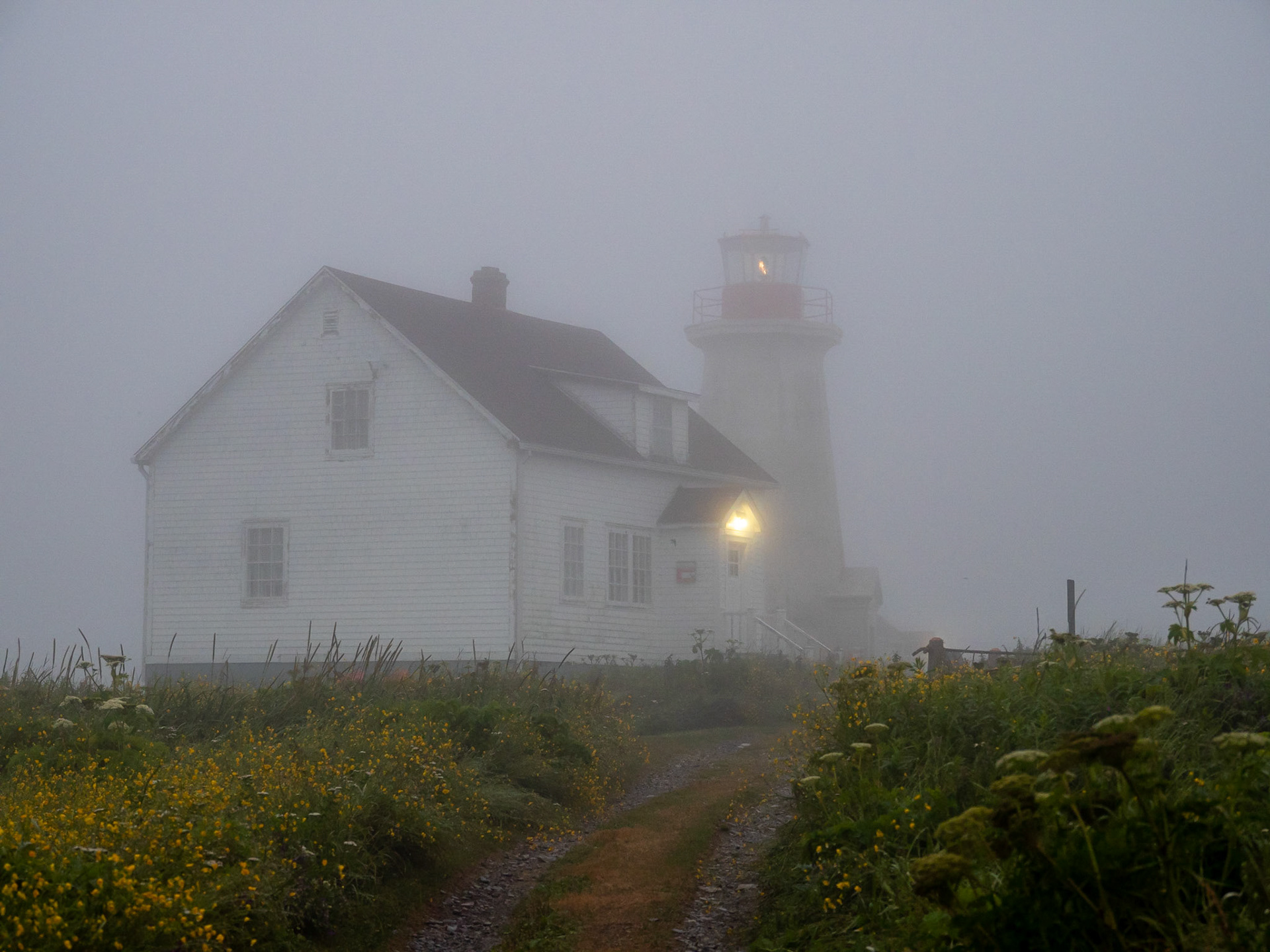
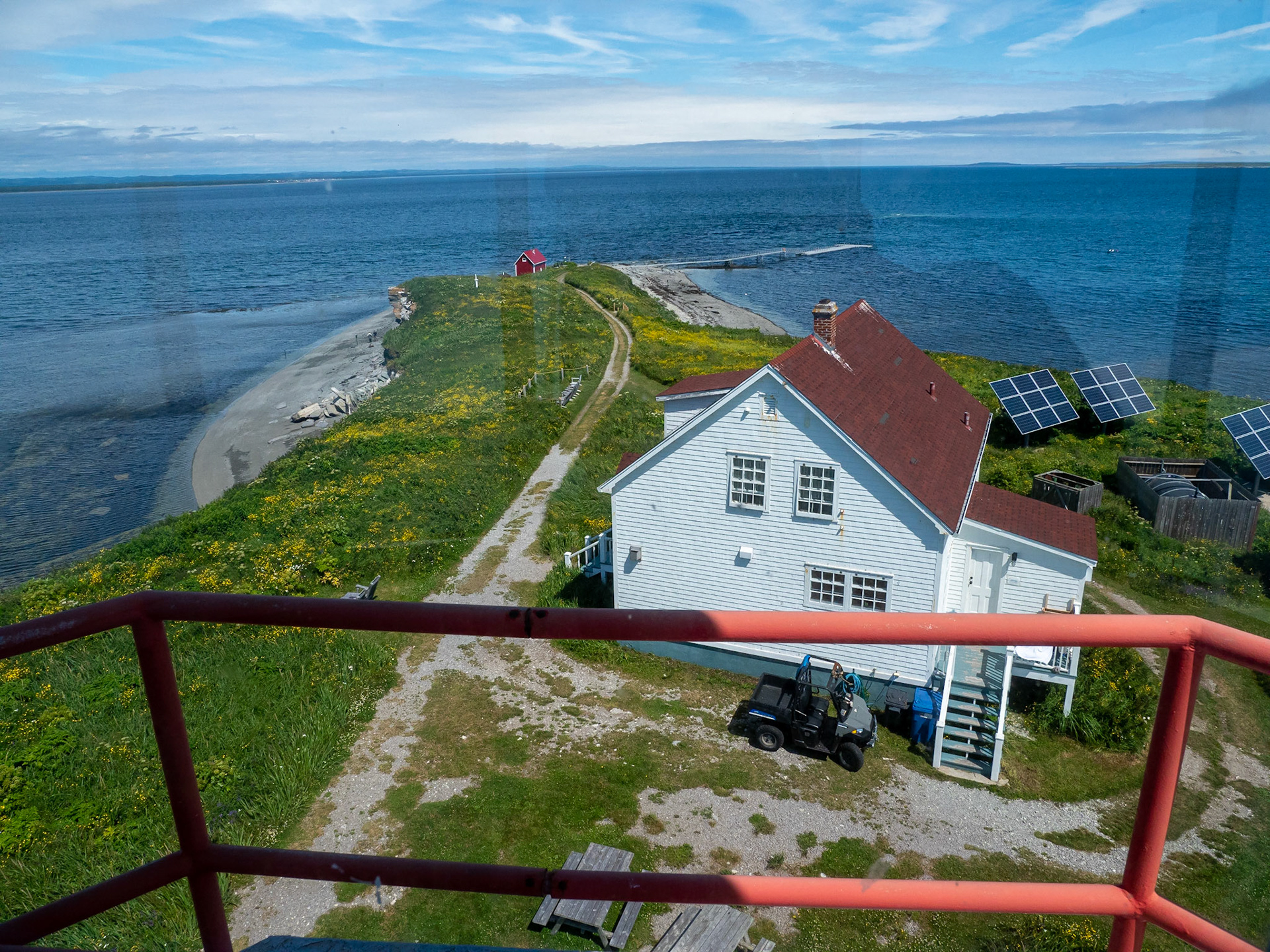
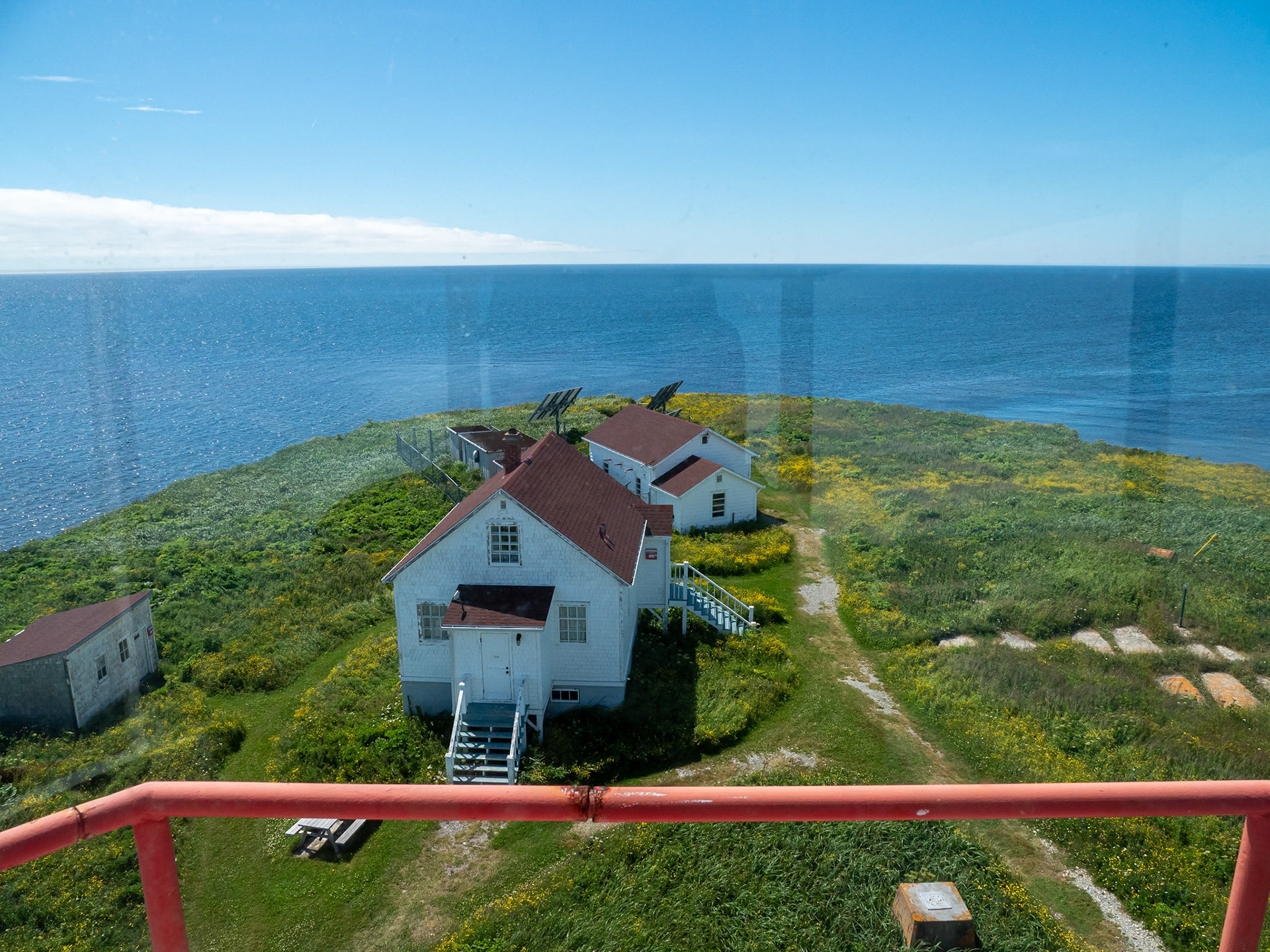
Day visitors, and overnight guests, arrive by open boat. The Parks Canada supply/staff boat, is the larger vessel.
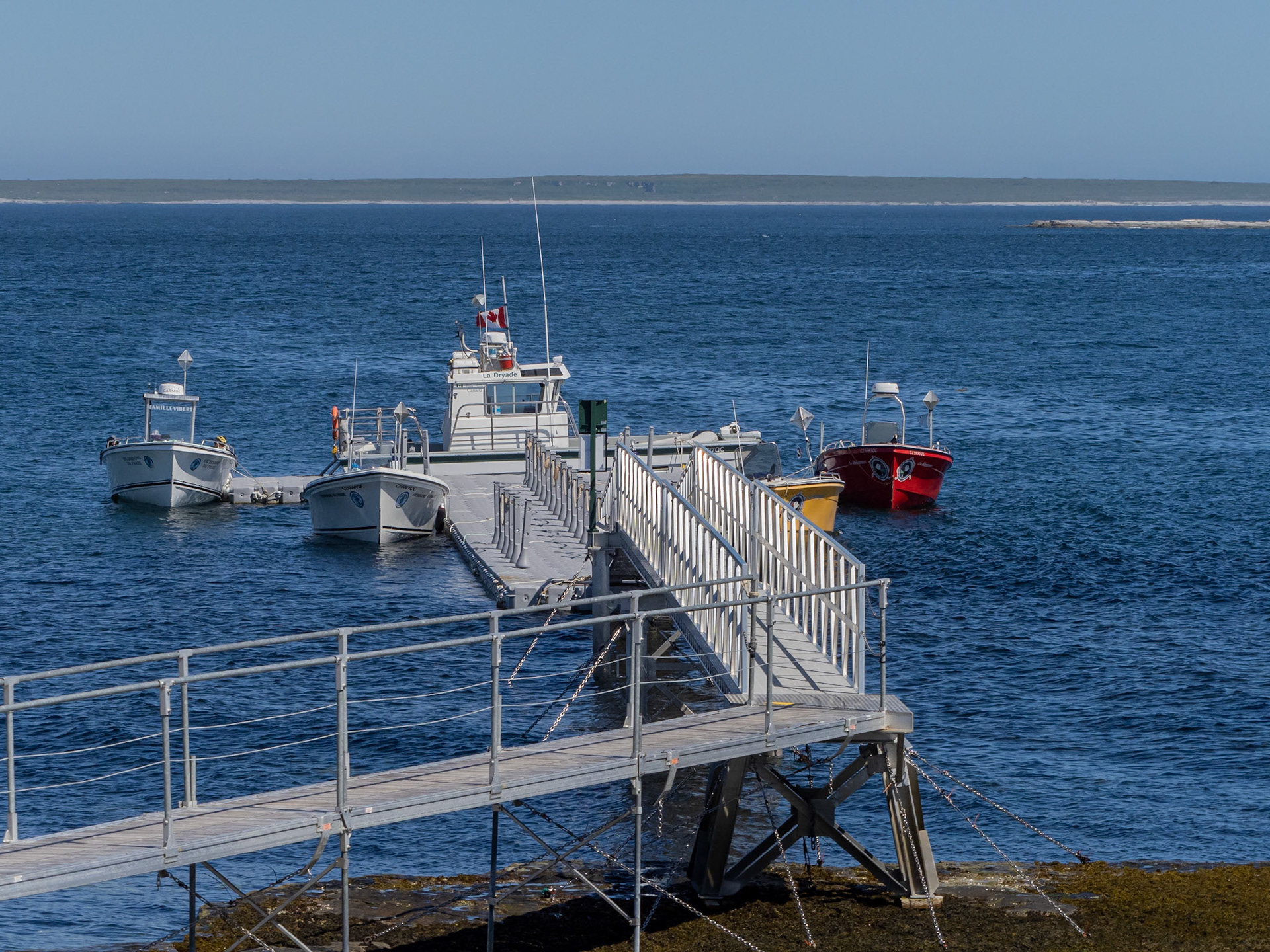
Click the button below for a PhotoStory about rock formations on three other islands in the Mingan Archipelago National Park Reserve.